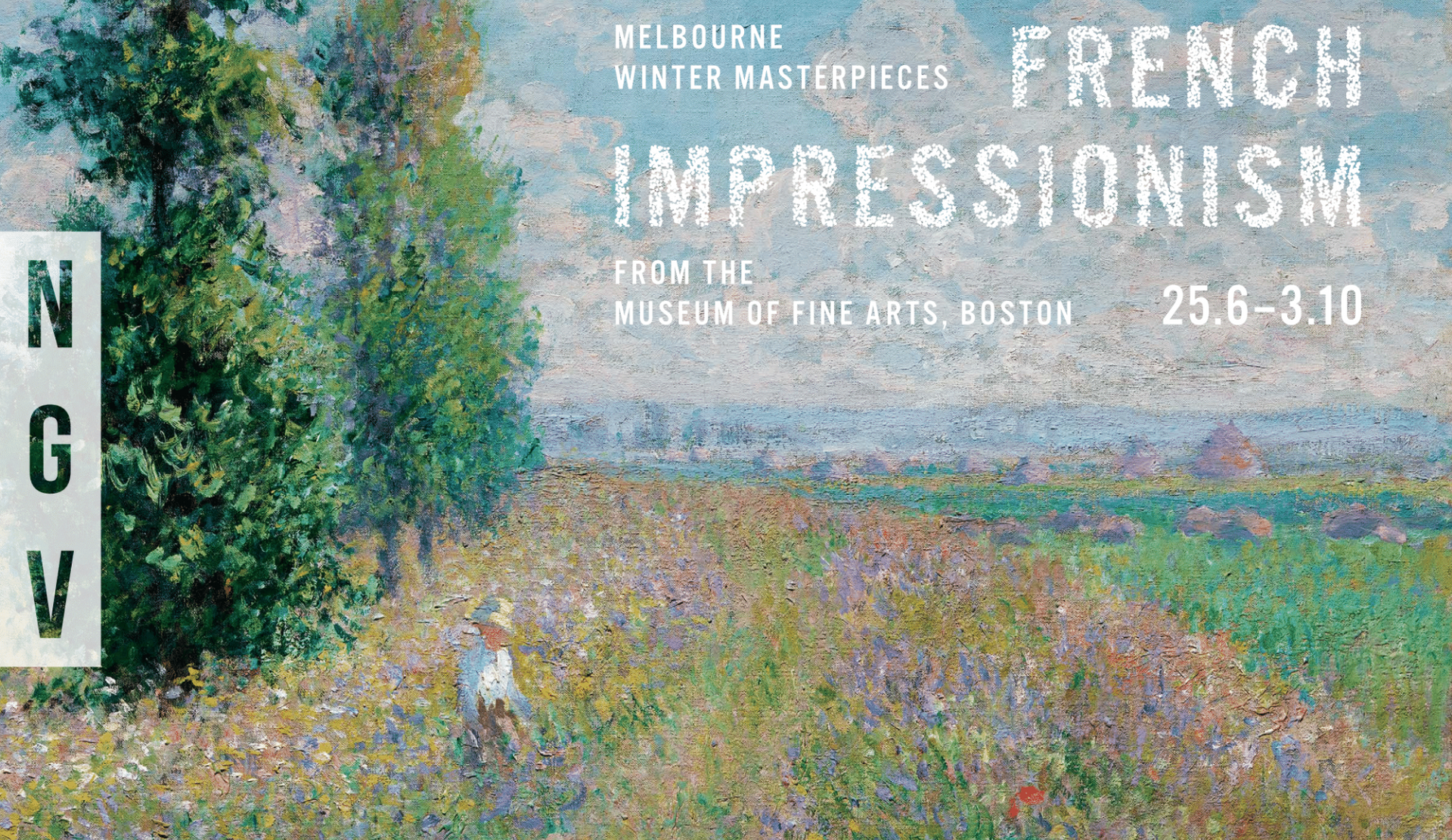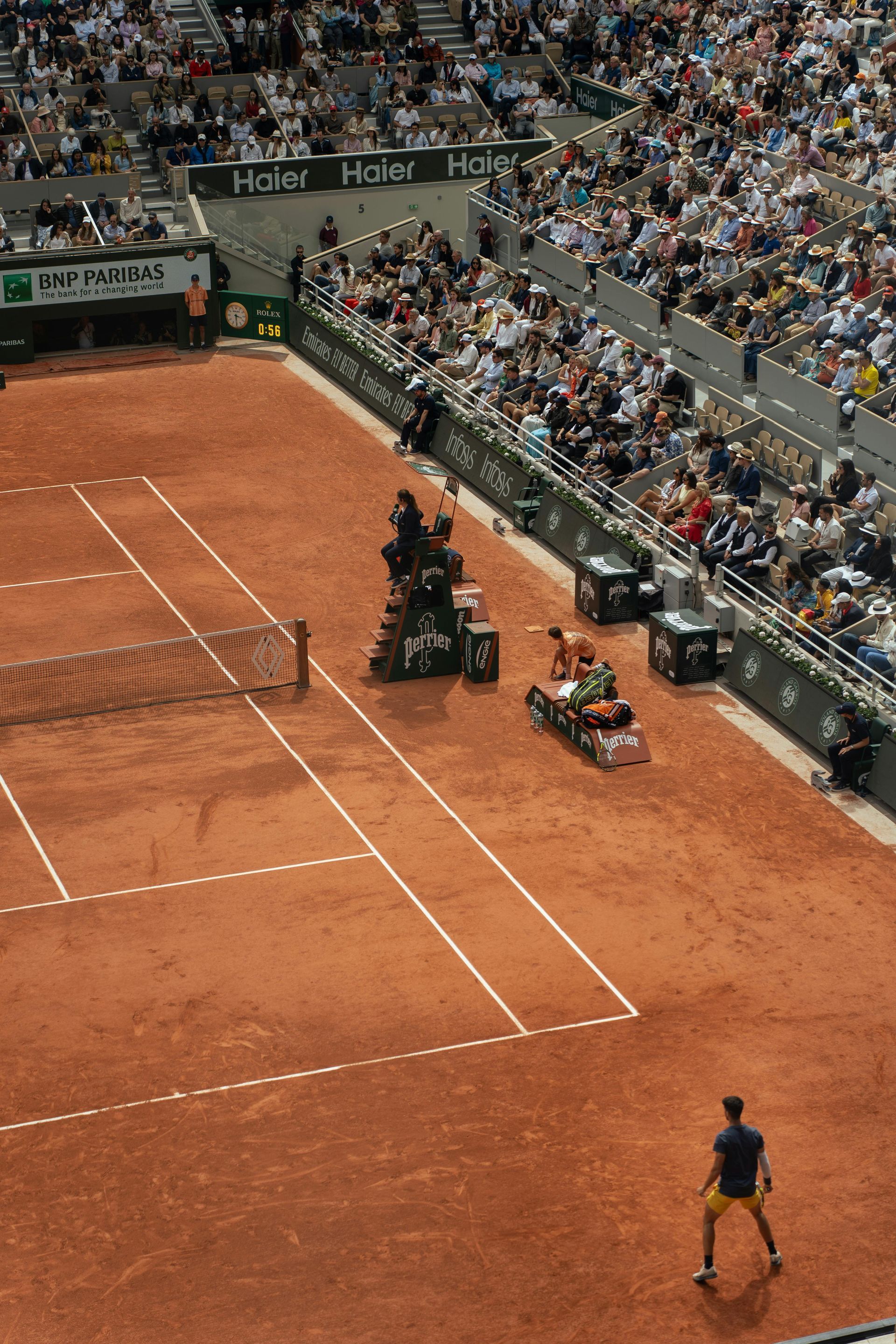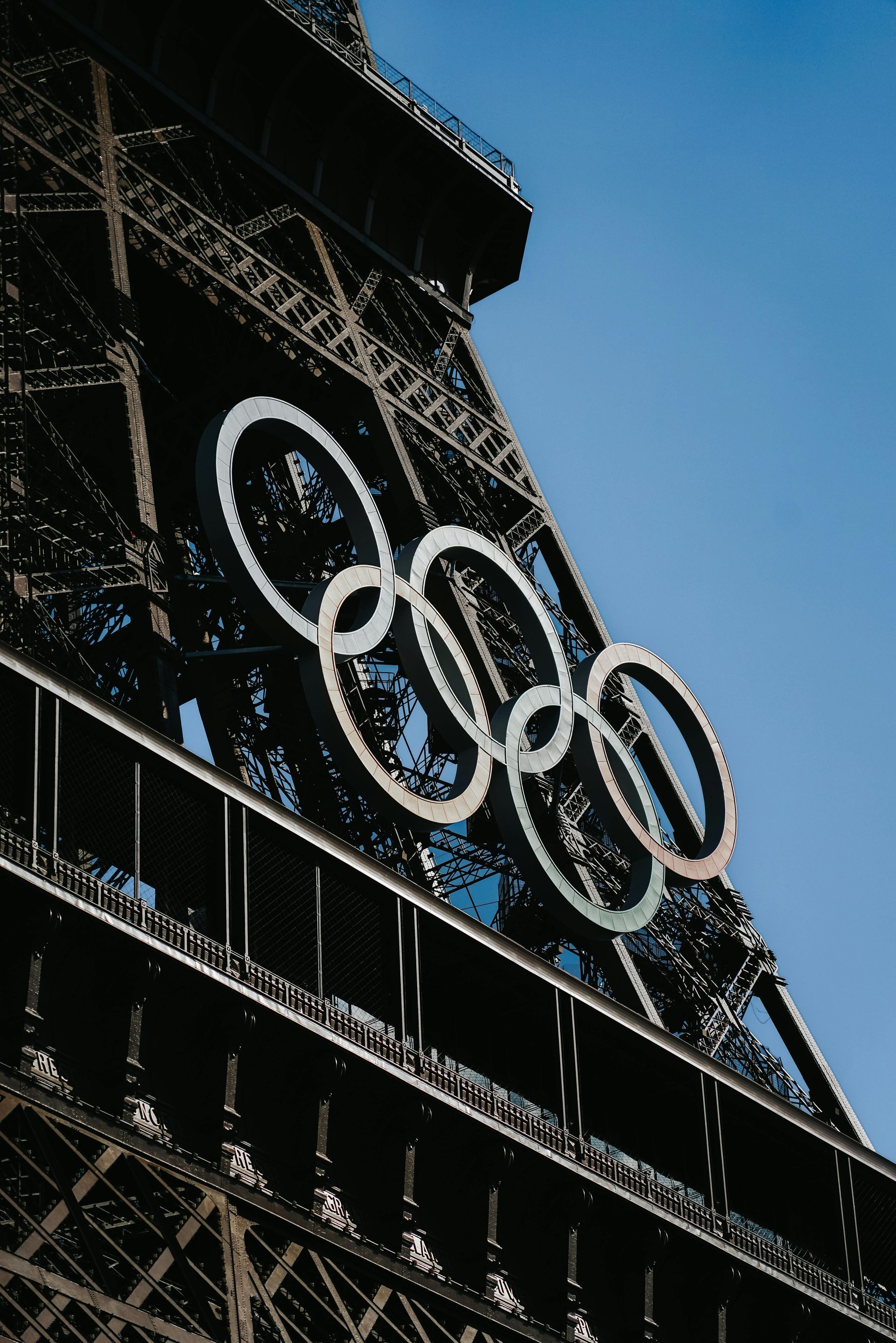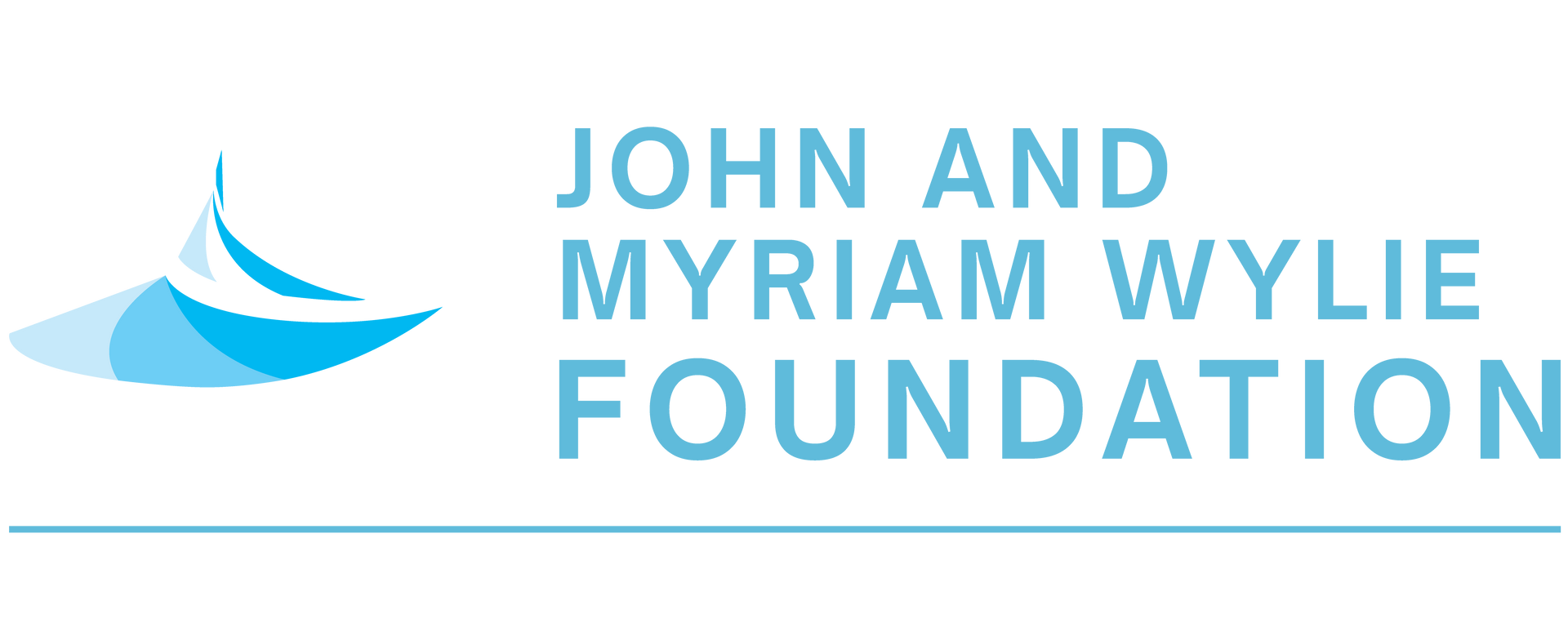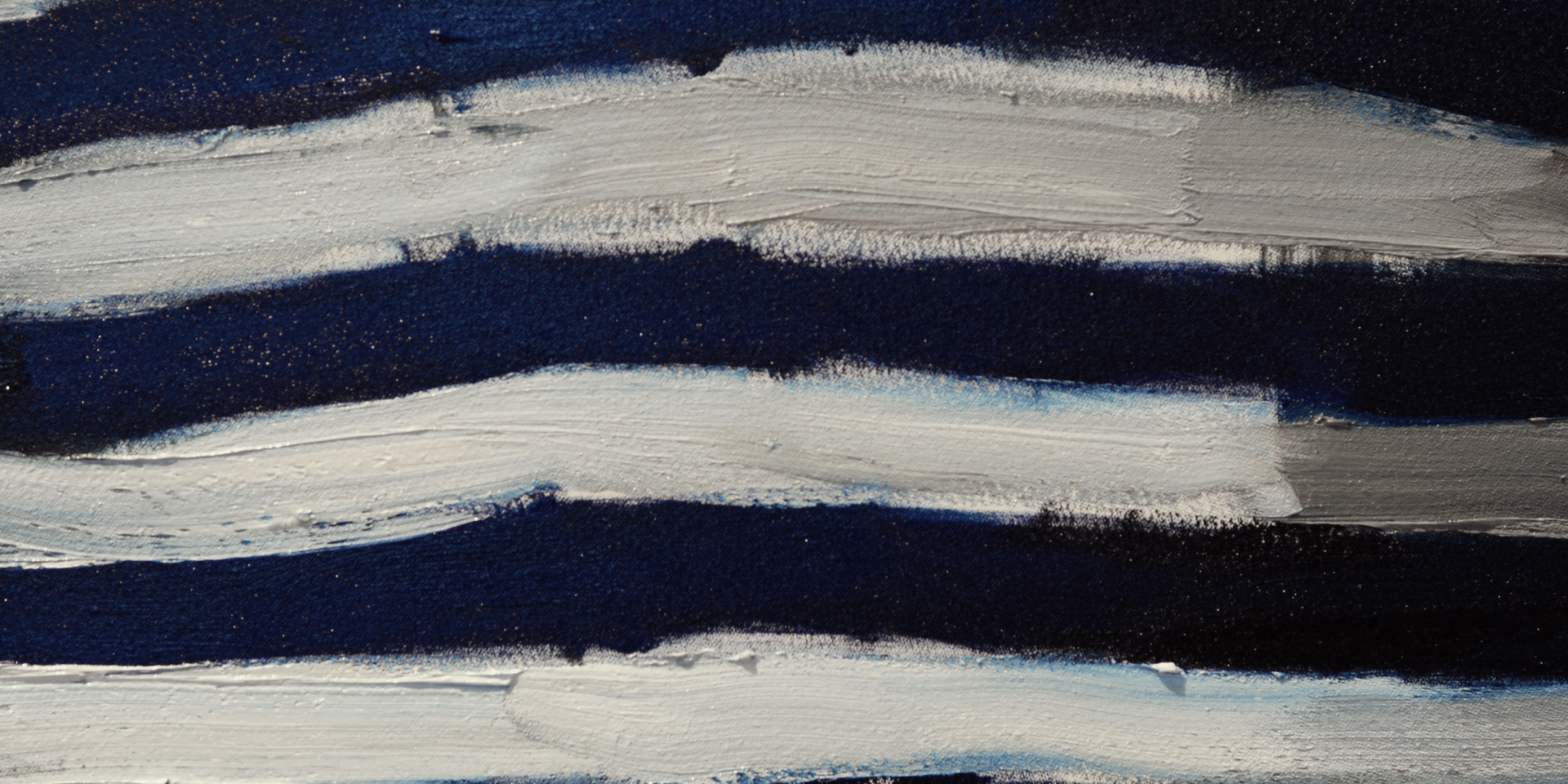
December 19, 2024
When we think of French iconic objects, the blue and white stripes of a Breton shirt or marinière, immediately come to mind. From the French Navy’s uniform to the humble holiday shirt, and Jean-Paul Gaultier’s collections, the striped jersey seems to be in the wardrobe of every French person or Francophile! It is true that, in fashion, the eye seeks out a striped garment over a plain one. However, the stripe has not always had good press! The Stripe in the Middle Ages Indeed, in the Bible the stripe is the devil’s cloth: “Thou shalt not sow thy field with seed of two sorts”. According to Michel Pastoureau, an expert in Western symbology, the stripe is “the discriminatory mark par excellence, the one that is most visible and that underlines with the most force the transgression […] of the social order”. In the early Middle Ages, laws established that striped clothing should be imposed on bastards, serfs, convicts. It was then extended to all those who were outcast, either because of a conviction (forgers, false traders, perjurers, criminals), or because of an infirmity (lepers, simpletons, lunatics), or because they exercised an infamous profession (jugglers, prostitutes, executioners), or because they were not or no longer Christian (Muslims, Jews, heretics). All these individuals transgressed the social order, as the stripe transgresses the chromatic order. Similarly, spotted or striped animals attracted suspicion: it was said that horses lacking plain coats devalue those who ride them. The stripe’s rise in popularity Since the Renaissance, however, though remaining a strong social marker, the stripe gradually loses its diabolical connotation. It is used to distinguish all domestic subordinate functions (for example the caricatural striped vest of the butler) and military (uniform). At the same time, a vertical “aristocratic stripe” developed, which was found on the sleeves and shoes of young Italian noblemen or kings such as Henry VIII. Similarly, the zebra has benefited from the progressive revaluation of the stripe. The Revolutionary stripe According to Pastoureau, the Revolution constituted a turning point in the history of the stripes. The stripe was indeed prized by American revolutionaries and became the symbol of freedom and revolution. We can still observe its resonance today as attested by the flag with the thirteen red and white stripes – the 13 colonies of America insurging against the British crown. Our French revolutionaries also borrowed this motif, a patriotic sign par excellence, and used it in all the emblems of the Revolution. Stripes of the 19th Century Then a new meaning emerged for stripes: the hygienic stripe. While it had been inconceivable in Western civilisations to wear a body linen other than ecru or white, for reasons of both modesty and purity, changes appeared around 1860 in Anglo-Saxon countries. Colour began to emerge (for body linen, toiletries and later sheets) through the stripes. This hygienic stripe, which purifies the color while brightening the white, has of course nothing to do with the vulgar and negative stripe inherited from the Middle Ages. Similarly, under the impulse of Queen Victoria who dressed her son Edward, the Prince of Wales, in a sailor suit, the stripes were adopted for children. Rapidly all aristocratic and middle-class families in Europe fell in love with the striped knitting. The stripe today A rhythmic, dynamic motif, stripes became more and more democratic. The French striped jersey also inspired leading fashion designers such as Coco Chanel. Adopted by intellectuals and artists, such as Picasso, the Breton shirt gives a sense of Frenchness – attention-catching, freedom, and fun! Still curious? If you are interested in finding out more about the history of the French striped shirt why not pick up a copy of Michel Pastoureau’s The Devil’s Cloth. A History of Stripes and Striped Fabric ? To hear Prof Véronqiue Duché discuss other French cultural clichés book a ticket to Les Lumières bleu.
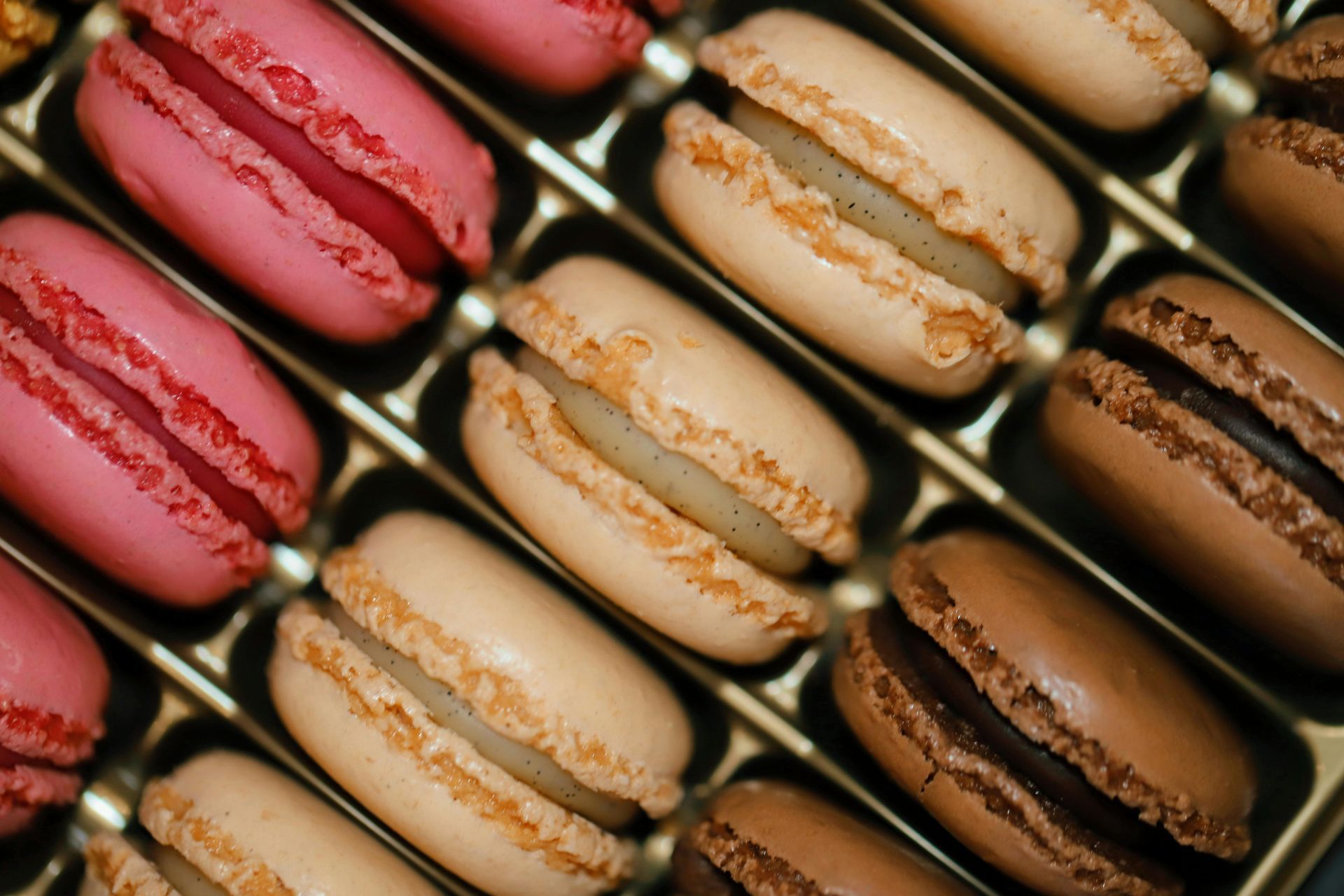
December 19, 2024
Did you know that Ladurée sells over 4 million macarons? That’s just short of the population in Melbourne! History The Macaron first originated in 8th-century Venice where it was popular in monasteries. It was brought to France during the Renaissance by Catherine de Medici when she married Henry II of France; the pastry chefs she brought with her would make them for her in the palace! Macarons did not gain popularity, however, until the end of the 18th century when a convent near Cormery began making them. When the convent was closed because of the Revolution, two nuns that had sought asylum in Nancy decided to bake and sell these pastries in order to pay for their accommodation. Suzanne-Marguerite Gaillot et Marie-Elisabeth Morlot became known as the “Macaron Sisters” – what savvy entrepreneurs! The macaron we know today is different from those of the past. It wasn’t until the 1930s that the crispy discs were sandwiched together with ganache, cream or other fillings. These days, who could imagine a macaron as only a pair of crispy discs? The new macaron was known as the “Paris macaron,” and Pierre Desfontaines de Ladurée is credited as one of its creators. No wonder they sell 4 million a year! The Modern Macaron Today, the macaron is the most popular dessert in France and the flavours get more creative by the day. Whilst some of the more common flavours, such as rose and chocolate (of course), are very popular, so are the more bizarre filling choices, like foie gras, Cheetos and even Vegemite! Nowadays, macarons have also become part of fashion Haute Couture. Indeed, Ladurée and other Parisian macaron-makers frequently collaborate with brands, such as Emilio Pucci and Christian Louboutin, who design boxes because macarons aren’t just a culinary wonder, but also an aesthetic luxury. They deserve as much attention as high fashion clothing and handbags – of course! Moreover, whilst your average macaron can be bought for only a few dollars, Haute Couture macarons can go for more than $7,000 a box! The iconic Pierre Herme offers these macarons which are bedazzled with the finest and most luxurious ingredients, such as fleur de sel, red grape and fine balsamic vinegar. A macaron may simply be a delicacy to some, but there is a lot more behind it! If by now you are craving a delicious, pillowy-soft macaron to get over those winter blues, look no further… We may not be able to go to Paris at the moment, but let Paris come to you! You can find marvellous macarons (without that Haute Couture price tag) right here in Melbourne: La Belle Miette Luxbite Lindt Chocolate Cafe Ganache Chocolate
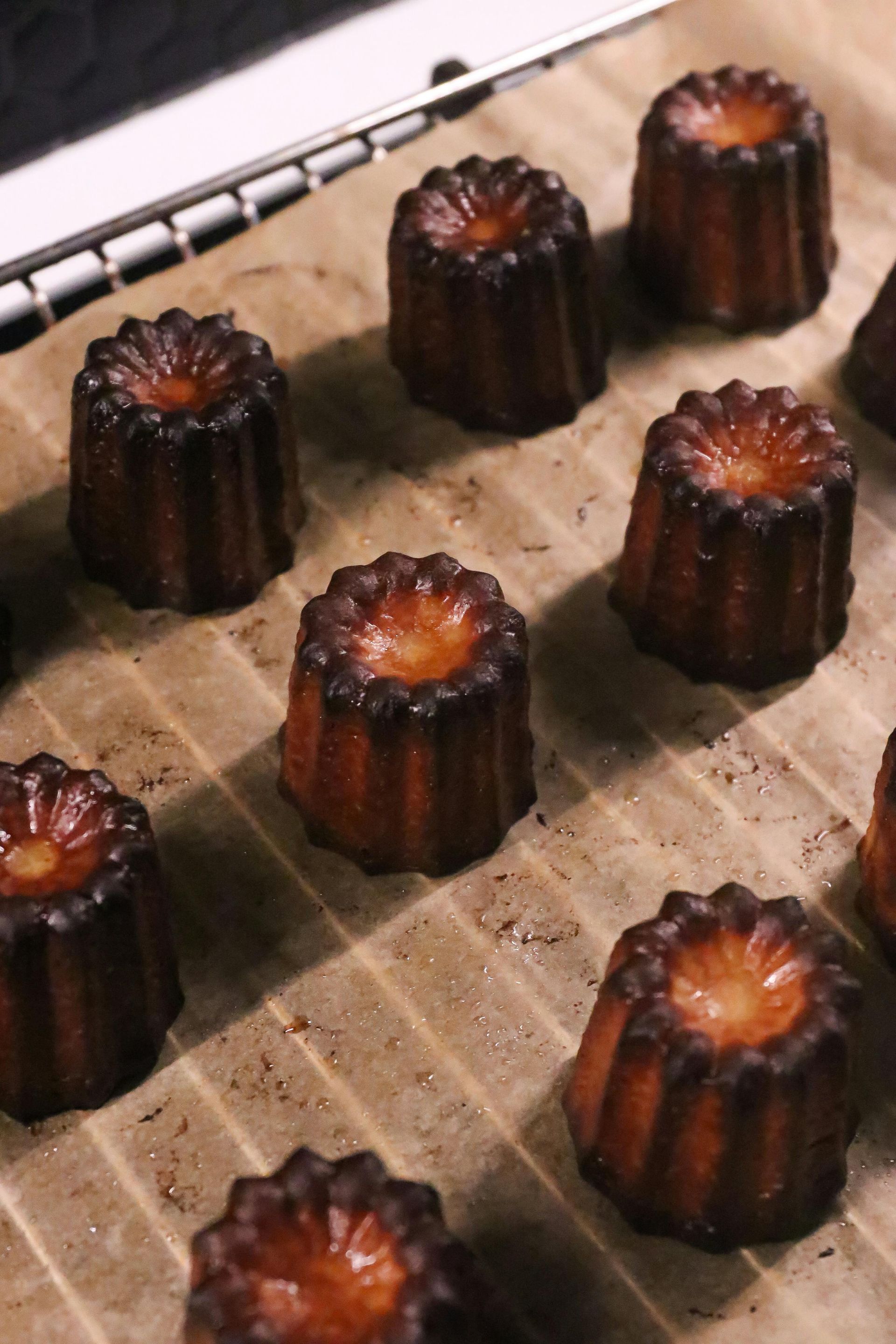
December 19, 2024
What is Canelé? A delicate and popular French treat originally from Bordeaux, Canelé takes the form of a little, grooved cylinder, traditionally flavoured with vanilla and rum. However, don’t be fooled by its minute size; the canelé hides a mysterious and long history… It is widely believed that the pastry was first created within the walls of the convent des Annonciades in the heart of 16th century Bordeaux. The nuns of the Annonciades convent would collect wheat that had fallen from the holds of ships or broken bags of flour in the harbour, as well as egg yolks from wine cellars of the Quai des Chartrons. As Bordeaux was a great commercial port, it was easy to source rum and vanilla from the islands. The nuns added these ingredients to their recipe for more flavour, and these little treats were either sold for profit, or distributed to the poor. Others believe, however, that Canelé was created in the 17th century by “les canauliers,” a guild of pastry artisans in Limoge. Whichever story you choose to believe, Canelé has been enjoyed in France for centuries and is now a ‘nom deposé,’ hence the capital letter… Vanilla, Rum… What else? The traditional ingredients that make up the canelé pastry consist of flour, egg yolk, milk and sugar, whereas modern recipes add tantalising hints of salted caramel, chocolate, raspberry and coconut. What would you be tempted to add? Canelé in Melbourne Is your mouth watering yet? Luckily, you don’t have to fly to France to enjoy a canelé or two. There are some great, authentic patisseries in Melbourne at your disposal. Most notable is Bastille Day stall holder, Sucette , whose baked goods are on full display online. There is no shortage of variety; lemon and poppyseed bundt cakes, chocolate noisette, Basque cheesecakes, flan, ginger loaves and, most interestingly, Sucette’s Matcha variety of canelé that epitomises the evolution of traditional recipes. Please consult the Sucette website for delivery information and options. Website: www.sucette.com.au Instagram: @sucette_melb Facebook: www.facebook.com/SucetteMelb/?ref=bookmarks Additionally, Canelé Alain specialises in traditional canelé that can be ordered in a variety of sizes and quantities, as well as for the purpose of larger events. Miam miam! Website: www.canelealain.com Instagram: @canele_alain Facebook: www.facebook.com/canelefrenchpastrie/

December 19, 2024
As we tune into the 24 th Winter Olympic Games in Beijing (4 – 20 February, 2022), it is the perfect time to delve into the long history and association France has with this major international event. Where it all began… The first Winter Olympic Games were held in Chamonix, France, in 1924 . Referred to as “International Sports Week”, the International Olympic Committee retroactively created the Winter Olympics in 1925, thereby making Chamonix the first ever winter games. Set in the stunning French Alps, sixteen nations took part in the games, held over twelve events and all held outside. The story continues… Following the hosting of the 1924 games, France has gone on to host two further Winter Olympic Games (and two summer games). In 1968, France hosted the 5th Winter Olympic Games in Grenoble, a French commune in the Alpine foothills. Held from 6 – 18 February, the games welcomed thirty-seven countries competing in thirty-five events contested across six sports (ten disciplines). Highlights of these games included Frenchman Jean-Claude Killy wining three alpine skiing gold medals and figure skater Peggy Fleming winning the United States only gold medal. In fact the popularity of Killy and Fleming was fuelled by ABC’s extensive coverage, a factor credited with making the Winter Olympics more popular in the United States. The Winter Olympics returned to France in 1992 when the 16th Winter Olympic Games were held in Albertville, situated on the river Arly , close to the confluence with the river Isère . Running from the 8 to 23 February, the games hosted sixty-four nations competing across six sports in fifty-seven events. While the host city was Albertville, figure skating , short track speed skating , speed skating , and the opening and closing ceremonies were the only events that took place there. All other events were held in the of Courchevel , La Plagne , Les Arcs , Les Menuires , Les Saisies , Méribel , Pralognan-la-Vanoise , Tignes and Val d’Isère . The games debuted eight nations along with the Unified Team (representing the non-Baltic former Soviet republics) and Germany (the newly consolidated as a team following the reunification of the former East and West Germany in 1990. Will the Winter Olympics return to France? While the 2026 Winter Olympic Games host city has been announced as Milano Cortina, Italy, there is no word yet on the 2030 hosts. However a joint bid from Spain, Andorra and France (Barcelona-Zaragoza-Pyrenees) are competing against Japan (Sapparo) and Canada (Vancouver-Whistler) for the privilege. The successful host city will be announced at the IOC Meeting in Mumbai in 2023. Interested in finding out about France’s extensive sporting culture? Read our article, AN ARMCHAIR GUIDE TO THE TOUR DE FRANCE 2021 .
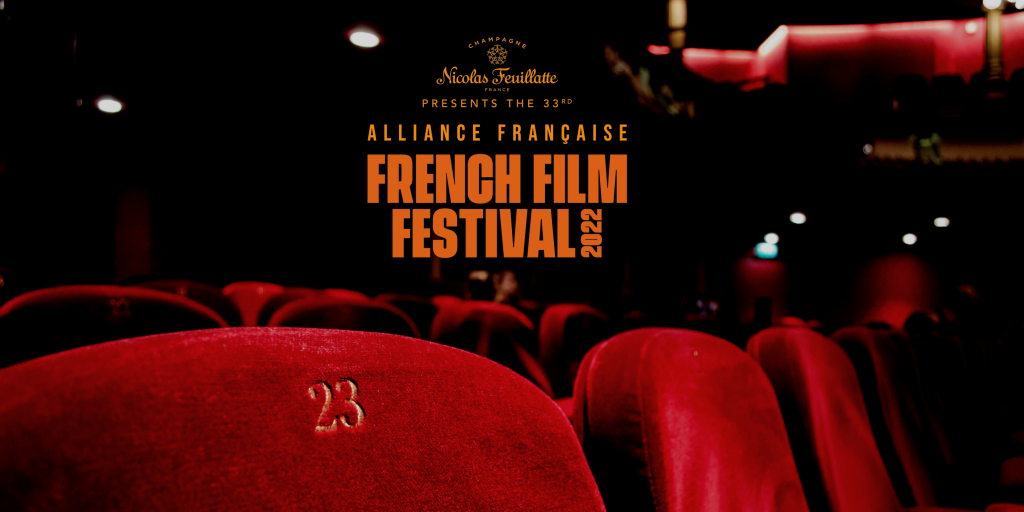
December 19, 2024
As we prepare for the Alliance Française French Film Festival 2022, we wondered what the differences between French and Australian cinema are. Even though going to the movies is a universal activity, we found some interesting answers. Have a look! French VS Australian Cinema etiquette Feeling like having a little apéro at a movie theatre in Australia? No problem! The bar will offer a variety of beers and wines to enjoy while watching your film. Can you believe that Sauvignon Blanc or Merlot, as well as any other alcoholic beverage, is not permitted in France? Sacré bleu ! If you are thinking of eating a meal whilst watching a movie in Australia, go right ahead! There are many tasty meal choices for you to buy especially in the large cinema chains. In France however, you will only have the option to buy popcorn, sweets, and other regular cinema snacks. Note for your next trip to France: always plan some time for food before or after your film! Speaking of movie snacks, the salty and buttery popcorn we know so well in Melbourne is hard to find in France. Instead, the French opt for sweet versions of popcorn often coating it in sugar or caramel. How do you feel about that? French VS Australian Film Industry The Lumière brothers invented cinema in 1895. The first Australian cinema only came a year later in 1896. Despite this small gap in the introduction of filmmaking between the two countries, we noticed a considerable difference between the French and Australian film industries nowadays. While approximatively 200 movies are produced every year in France, only 37 films are made on average on Australian soil. So, it comes as no surprise that France has a much larger cinema infrastructure – making it more widely recognised internationally. Do you know Cannes Film Festival? You certainly do, but have you heard of the Australian equivalent? There isn’t one, however we are lucky to have independent festivals including the largest French Film Festival outside of France happening soon at Palace cinemas. Despite all these differences between France and Australia, one thing we have in common is our love for cinema. Check out the program and buy your tickets for the Alliance Française Melbourne French Film Festival on www.affrenchfilmfestival.org. Have you seen our recent posts about the Alliance Française Melbourne French Film Festival? Check them out here on Facebook and Instagram !
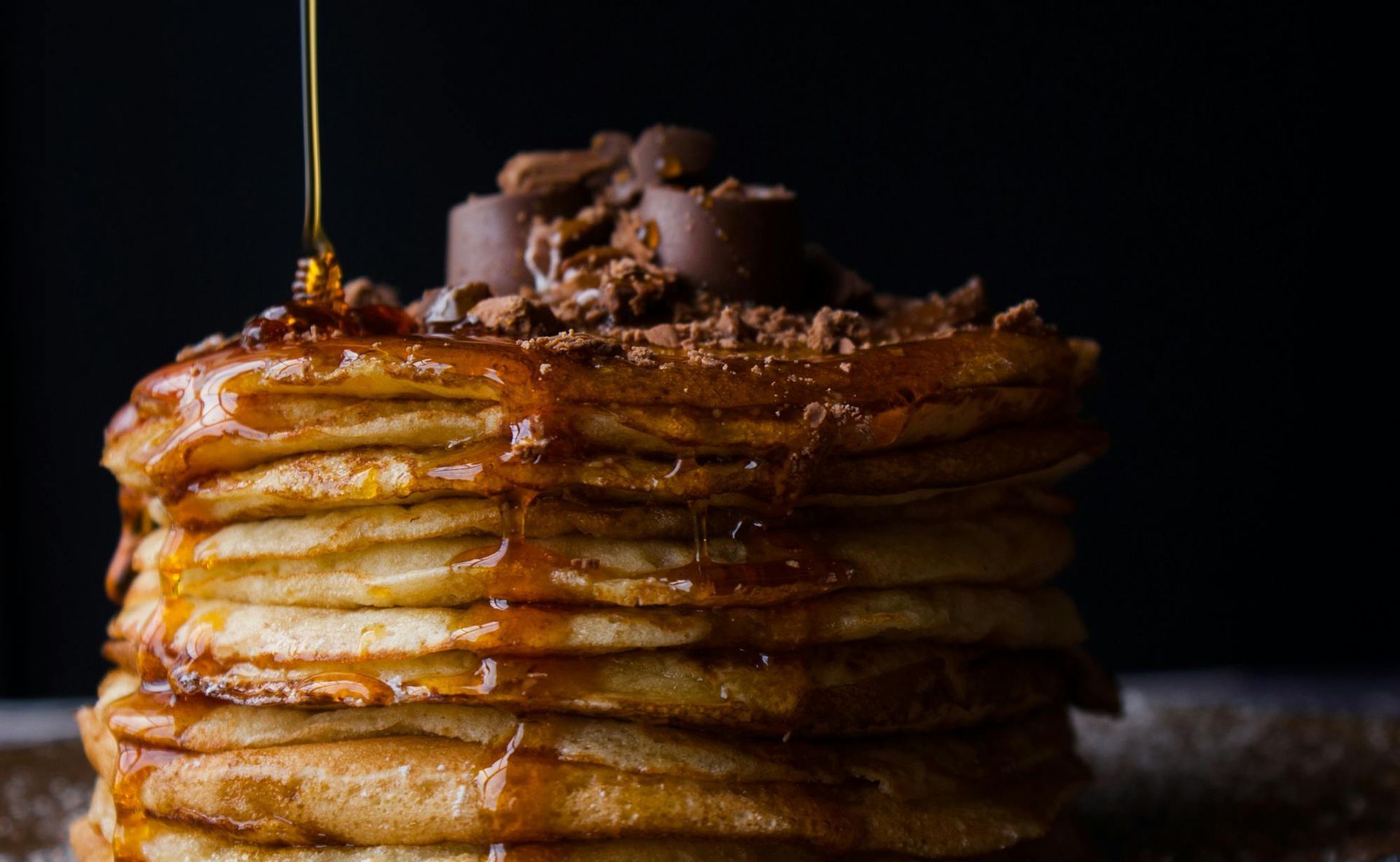
December 18, 2024
The name “Shrove Tuesday” arises from it marking the culmination of the season known as Shrovetide which includes indulging in food that one might give up as their Lenten sacrifice. Also known as Fat Tuesday, Mardi Gras and Pancake Tuesday, the Tuesday before Lent is the last chance to feast for 40 days. Shrove Tuesday gets its name from the practice of ‘shriving’, an old term for the practice of confession. Before the beginning of Lent, a period of fasting and repentance, Christians confess and receive forgiveness from sins so that they can start Lent guilt-free. On Shrove Tuesday, the final day of the Shrovetide season, many Christians, such as Anglicans, Lutherans, Methodists, and Roman Catholics, have an emphasised focus of self-examination, reflecting on what sins they need to repent for, and what improvements in life or aspects of spiritual growth they need to ask God’s help in edifying. Shrove Tuesday serves multiple purposes of encouraging Christians to repent of their sins before the start of Lent on Ash Wednesday and also giving them the opportunity to partake in a last round of jubilation before the beginning of the austere Lenten season, which is characterised by making a Lenten sacrifice, fasting, praying and several spiritual disciplines, such as checking a Lenten calendar and reading a daily devotional. In some countries, such as the United Kingdom, Ireland, and parts of the Commonwealth, Shrove Tuesday is also known as “Pancake Day” or “Pancake Tuesday”, as it became a common practice to eat pancakes as a celebratory meal. This evening is an opportunity for families to eat certain foods that would be banned during Lent, such as Meat, Eggs, Flour, Milk and fatty foods. Using many of these ingredients, Pancakes became popular in England as a way of using up those items that remained in pantries. So historically, Mardi Gras is the day for eating up the last of the rich and fatty foods that remain in the house and for having a big celebration before a long period of discipline and repentance. Let us notice that ”Gras” means fat in French. Today, less people observe Lent, and the celebration of Mardi Gras or Carnival has very little to do with religion. Although found primarily in Roman Catholic areas and based on the tradition of Shrove Tuesday, Carnival is now a social fun event for the community. People more than ever like to celebrate Mardi Gras, attracted by its joyful party atmosphere, music, food, and parades. It is however an event that is characterised by noisy celebration to an excess that the Church frowns upon. If you can’t wait until Shrove Tuesday for a good reason to eat pancakes, head to France, whose ‘Pancake Day’ is on Candlemas (‘La Chandeleur’) which is the 2nd of February. Religiously, February 2nd is known in the Christian faith as Candlemas (Candlemass). It marks the day that Jesus was presented at the temple in Jerusalem 40 days after his birth and is celebrated by Christians bringing candles to church to be blessed. The candles serve as a symbol of Jesus, who is known in the faith as the Light of the World. However, before becoming a religious holiday, this date was celebrated by pagans celebrating the fertility of the earth and the end of winter. One French tradition is to hold a coin in one hand and flip the pancake with your other hand. If you catch the pancake in the pan, that will bring good luck for the coming year. So whether Pancake Day is celebrated in France on 2nd February or around the world on Mardi Gras, Shrove Tuesday gives the people a special reason to feast and gather together in respect of the traditional religious reasons but much more socially nowadays. And in France Mardi Gras is another opportunity to celebrate the end of winter since the Antiquity (calends of March) and the upcoming of Spring. So on that day, French people will join the rest of the world in celebration, eating crepes again of course and have fun in organising exciting fancy dressed parades in the streets, with lots of rich food and music to create a special atmosphere of joy in the community. Hungry for crepes after reading about Pancake Day? Check out our recent recipe for Crepes Suzette on Facebook and Instagram !
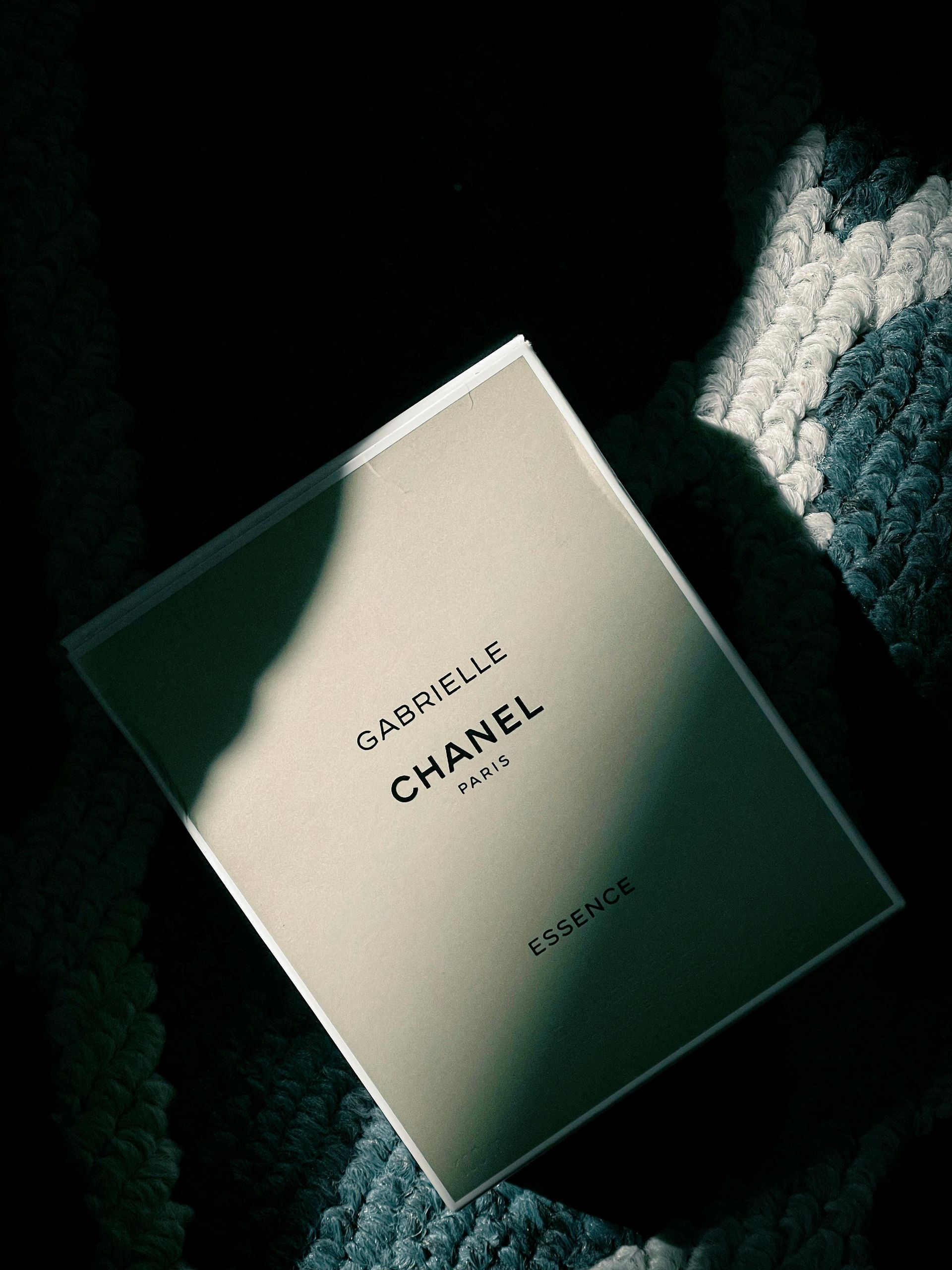
December 18, 2024
Lucky Melbourne, a feast for your eyes awaits you at the National Gallery of Victoria . The exhibition will run until 25 April 2022 and is open daily from 10 am to 5 pm. Gabrielle Chanel, nicknamed “COCO”, a name she inherited during her short time singing in cabarets, was a French fashion designer. Coco means “darling” in French. As we reflect on Gabrielle Chanel’s legacy during the month of March, we also celebrate International Women’s Day. Chanel was a designer during a male-dominated era from the 1930s onwards until her death in 1971. She pioneered minimalism and a more casual style of clothing for women. She recognised that women needed to be free from corsets and designed modern and casual elegant garments, well before our time. Gabrielle did not come from a privileged background. She was placed in a convent – which ran an orphanage – following her mother’s death at age 11. It was there she took up a needle and thread. Through hard work and enviable business acumen, she succeeded in leaving her mark and her unique fashion legacy on the world. The NGV exhibition explores Chanel’s journey from the birth and evolution of the famous Chanel style. Very early in her career, Chanel embraced jerseys for the freedom they could bring to everyday garments. She used tweeds and wools for their warmth, texture, lively colours and interest, most famously for suits and close-fitting dresses. She strived to make women comfortable and elegant. She succeeded in influencing women to build a timeless wardrobe of staples such as the famous striped Breton boat neck t-shirt. What can you expect to view? You will be delighted to see hats adorned with ribbons and feathers, as Chanel began her career as a creator and “couturière” as a milliner, at 21 rue de Cambon, Paris in the early years of the 20th century, when Paris was already a fashion capital. As you move through the first room of the exhibition you will be delighted by the use of silk chiffon feather-light gowns and silks, and broderie anglaise in cottons, princess line dresses known for their graceful fit and elegance. You will see the first of jersey garments for women and loose-fitting evening dresses from the 1920s adorned with carefully placed beads to flatter the female form, magnificent coats embroidered with silk thread, capes in crepe and silk adorned with feathers, dresses meticulously embroidered with sequins in crepes and georgettes. Gabrielle Chanel (designer) Evening dress spring–summer 1939 printed silk, dyed ostrich feathers Museum of Applied Arts and Sciences Sydney Photo © Julien T. Hamon Gabrielle Chanel (designer) Suit comprising jacket, skirt and blouse spring–summer 1966 (detail) overpainted wool, raw silk, gilt-gold metal National Gallery of Victoria, Melbourne Presented through The Art Foundation of Victoria by Mrs Angela Wood, Member, 2000 Photo: Narelle Wilson, NGV The exhibition includes a remarkable collection of the Chanel suits displayed majestically at the NGV in a large and stunningly presented room. These exquisite suits are arranged in rows to give you the impression of a classic Parisian fashion show. The two-piece suits, “le costume”, began to appear for women in the late 1800s but they were plain in neutral colours such as greys and beiges. Chanel re-designed the suit with only a few seams for a flattering fit and her famous faux wrap skirt to allow women to walk with ease, elegance and, most importantly, comfort. The bodice of the Chanel “gilet” or cardigan was made up of only four pieces, skimming the body perfectly. The silk lining was famously quilted to the fabric to allow it to gently mould the body for a flattering fit. The sleeves were made of an unusual three pieces to allow them to be closely fitted and to allow free movement without the sleeve riding up when lifting the arms. It also allowed the use of interesting trims and embellishments on the cuffs. And there were “real” pockets. Because Mademoiselle enjoyed the freedom of pockets. You may catch a glimpse or two of the metal chains added to the hemline of the bodice ensuring that the jacket is weighted and hangs perfectly across the wearer’s body. The Exhibition also showcases breathtaking accessories to build upon women’s style such as custom jewellery, gloves, the famous bag and the two-toned slingback shoes. An exhibition “à ne pas manquer”, not to be missed, awaits your visit to the National Gallery of Victoria .
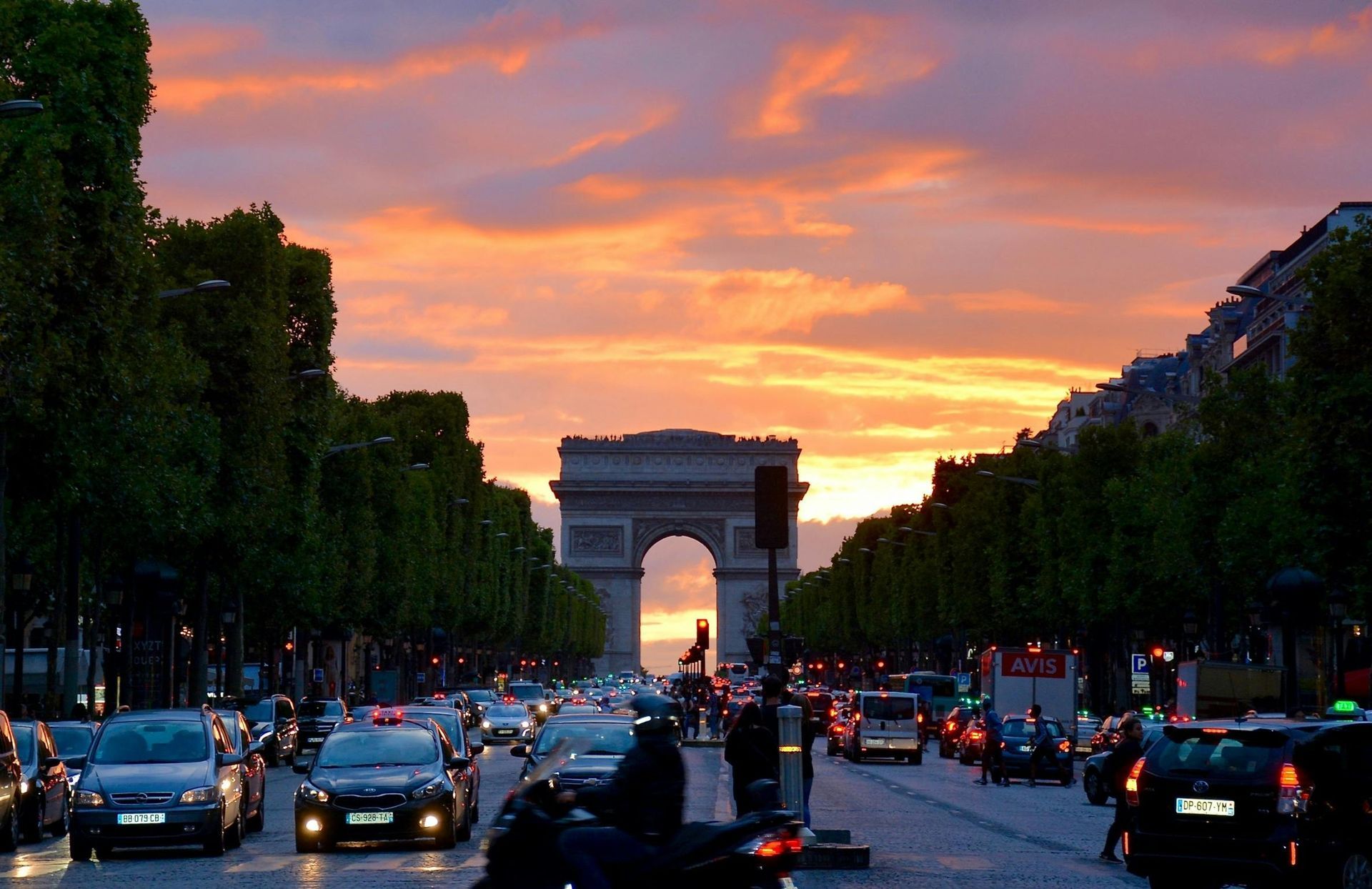
December 18, 2024
It was against the backdrop of war in Ukraine that the French election campaign opened on Monday the 28th March. The twelve candidates officially in the running had certainly not foreseen this element which may weigh in the voters’ choice. Twelve candidates for one seat Twelve candidates declared themselves on the 7th March, 2022, after having gathered the 500 sponsorships of elected officials necessary for a candidacy. This number may seem impressive, but it is less important than the one in 2002, when 16 candidates claimed to be president of the Republic. This position attracts a lot of interest: it should be noted that 40 potential candidates withdrew, due to a lack of signatures or in favor of another candidate. Some of them are seasoned veterans: seven of them had already run in the last elections, in 2017. Among them, four had also run in 2012. The French voters will have a wide choice to elect their favorite candidate among four women and eight men in the first round on Sunday the 10th April. It has to be noted that only two candidates will be present in the second round, on April 24th. Emmanuel Macron’s election in 2017 and the end of the two-party system In 2017, Emmanuel Macron was the first President to be elected without belonging to one of the main French parties. That was the first time it happened in the history of the fifth Republic in France. A few months before the election, he created a new party (En Marche) and called every French citizen (from right and left) to join him. This was probably the first step towards the definitive end of the two-party system in France. But an end to the classic right/left two-party system does not mean the end of the right/left divide, as the two ideologies still remain very strong and meaningful for every French citizen. And if the right/left divide disappeared, another replaced it: democratic parties vs extremist parties. These are considered much more of a threat for Emmanuel Macron than the right and left parties. 2022, a zoom-in on the candidates The presidential majority (La République En Marche!) is represented by the outgoing president, Emmanuel Macron, the youngest ever president of the fifth republic. Facing him are six candidates on the left and five on the right. The extreme or radical left-wing is represented by three men and one woman: Nathalie Artaud (Lutte Ouvrière), Philippe Poutou (Nouveau Parti Anticapitaliste), Fabien Roussel (Parti Communiste) and Jean-Luc Mélenchon (Insoumis). A single candidate, Anne Hidalgo, represents the left-wing (Parti Socialiste) while another, Yannick Jadot, represents the Greens (Europe Ecologie – Les Verts). On the right-wing, Valérie Pécresse (Les Républicains) is trying her luck, with three candidates for the extreme or radical right-wing: Marine Le Pen (Rassemblement national), Éric Zemmour (Reconquête!) and Nicolas Dupont-Aignan (Debout la France). Jean Lassalle (Résistons) is ranked among the Divers Droite (Various Right). Not all of them expect to reach the second round, but they do want to make their voices heard. This is the case of Nathalie Artaud, who hopes to “overthrow the system”. Indeed, the candidates offer very different profiles: among them are seasoned politicians, journalists, trade unionists, both known to the public and newcomers to the political arena. But the successful candidate, who will take up office on the 13th May at the latest, will not be out of the woods yet: they will have to wait for the legislative elections on the 12th and 19th June, to know if they will have a majority in the National Assembly and the required confidence to govern. These votes will allow the election of 577 deputies, among which 11 will be deputies elected by French citizens living outside of France – more than 25,000 of whom live in Australia.
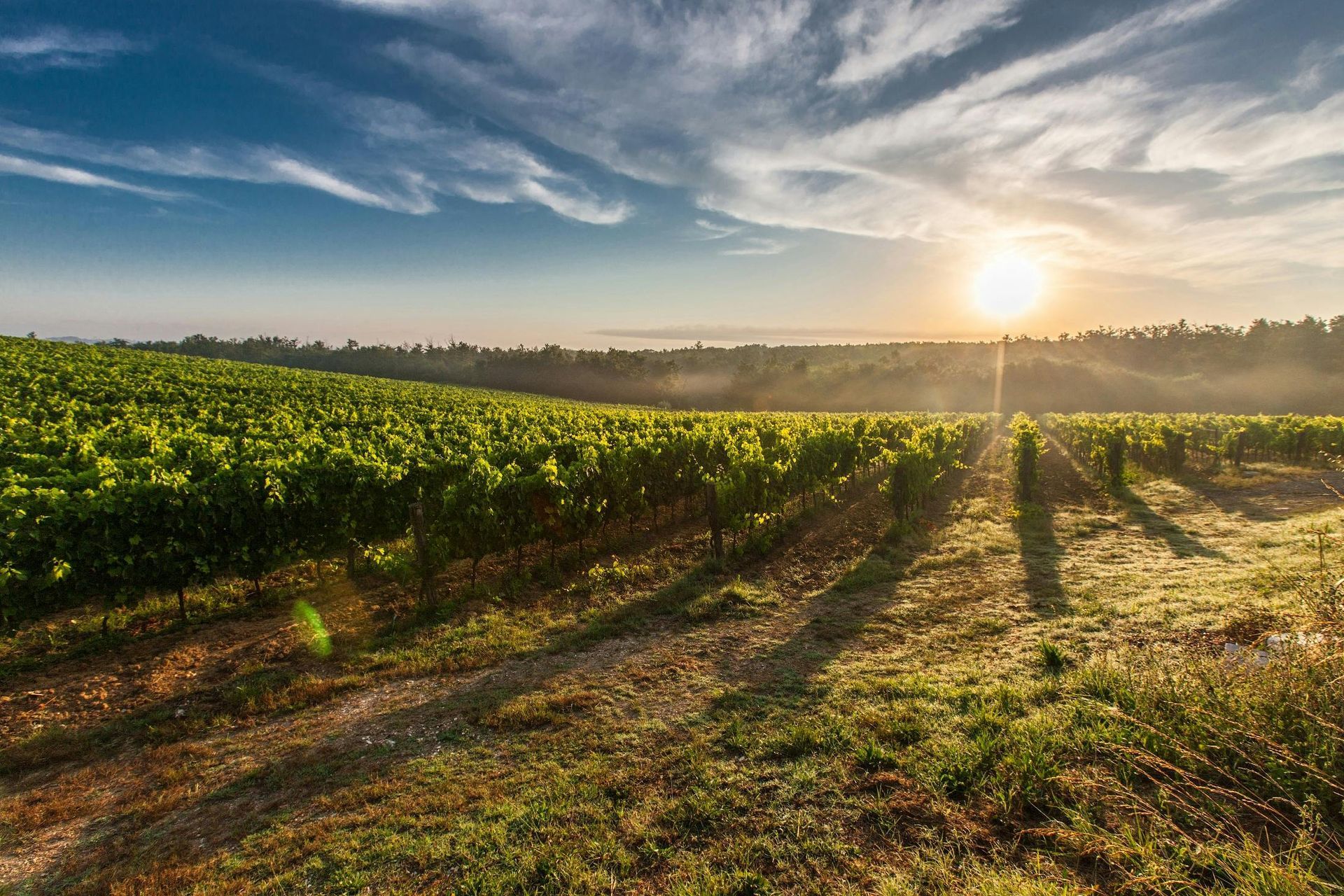
December 18, 2024
Autumn gives us the perfect opportunity to appreciate the land’s natural richness and beauty. This Easter break, take some time to explore the world class French-inspired wineries that call Victoria home. Here are a few unmissable Victorian wineries to discover this Autumn. 1. Chapoutier About the Winery In 1997, true to his pioneering spirit, Michel Chapoutier set out to explore the terroirs of the oldest continent. He wanted to meet people, people like him with a passionate interest in bringing out the true character of vines. A matter of convictions, too, prompting discovery and observation. He found land awaiting its revelation. Michel Chapoutier’s aim is to invent properties, not to follow the example of others. Michel Chapoutier buys land and joins forces with major winemaking families, playing on their complementary know-how and experience. In 2002 he joined forces with Ron and Elva Laughton (Jasper Hill) in central Victoria, and at Heathcote, north of Melbourne, on a very unusual, early Cambrian soil. He has also worked with Rick Kinzbrunner on the Giaconda vineyard at Beechworth, in northeast Victoria, on a granite soil. After a brief experimental joint venture with his US importer (Terlato & Chapoutier), Maison M. Chapoutier bought two other Australian vineyards (Shays Flat and Landsborough) in the Victorian Pyrenees and set up the fully owned Domaine Tournon. What we love The result of Chapoutier’s collaborations has been a range of exceptional wines, displaying great elegance and mineral purity. More than just a wine tasting experience, make the most of the stunning cellar door and winery backdrops for a gustative and educational insight into the role terroir plays in producing their award-winning wines, both French and Australian. Location 141–143 High Street, Heathcote VIC 3523 Travel time from Melbourne Just over an hour and a half’s drive north of Melbourne’s CBD (120km) Find out more https://www.mchapoutier.com.au/ 2. Dominique Portet About the Winery Ninth-generation winemaker Dominique Portet chose the cool climate of aptly named Coldstream in the Yarra Valley, home to the eponymous winery he founded in 2000. It was the culmination of a tenacious search for grape growing terroir to rival that of his native Bordeaux – but also the start of a new chapter in a winemaking story that has its roots in France in the early 1700s. Now son Ben – generation 10 – heads the winemaking team, firmly observing the central tenets of this young yet historic estate: respect for tradition, understanding of site, and an open mind towards contemporary practices that shape wines that are ever more refined and delicious. What we love Try the cabernet sauvignon and Heathcote shiraz. The very simple Winemaker’s cafe with delicious baguettes, Mediterranean tarts, and French chicken pies are always ready, or Monte coffee with a homemade cake! The La Boutique homewares are easy to browse and add a bit of enjoyment. The tour et detours, are well worthwhile if you are after a learning experience. Otherwise enjoy the space and just play petanque as you breathe in the fresh air. Location 870-872 Maroondah Hwy, Coldstream VIC 3770 Tr a vel time from Melbourne Just over an hour’s drive from the heart of Melbourne (69km) Find out more www.dominiqueportet.com 3. Chandon MOET About the Winery Sixty years ago, Robert-Jean de Vogüé and an assortment of his closest friends set out to redefine luxury sparkling wine. They decided the only way to bring it into the modern world was to take it far, far from home. That journey of rediscovery began in Argentina and eventually took them to California, Brazil, China, India and, of course, all the way down here to little old Australia. At Chandon, they have always taken risks as they always believed it was riskier not to take them. John Wright, who ran Chandon California at the time, took a risk on our land of opportunity. He visited Victoria in 1982 and was chuffed with the can-do spirit of the Australians. In Australia, they were looking for something truly special: an area of cool climate with enough diversity of terroir to give them all the blending options they could dream of. The Yarra Valley was the natural choice, and the rest is history. What we love Visiting Chandon allows you to experience the real “méthode traditionnelle” of sparkling wines. Gain an understanding of the contributions of the land, taste masterfully-curated pairings at the restaurant, or – for the bolder and more experienced among you – take a self-guided tour which will lead you through marvellous vistas of the Yarra Ranges; an unmissable gift for both the eyes and the taste buds! Location 727 Maroondah Highway, Coldstream VIC 3770 Travel time from Melbourne Just over an hour’s drive from the heart of Melbourne (55km) Find out more https://www.chandon.com.au/visit/tastings-and-tours 4. Ten Minutes by Tractor About the Winery Ten Minutes by Tractor is the culmination of separate wine journeys that all started nearly 40 years ago, when a group of individuals saw the opportunity to come together and create the winery that exists today. Established in 1997 with three family-owned vineyards in Main Ridge – each ten minutes by tractor apart – they have since expanded by adding new vineyards, offering their wines a distinct character provided by the varying slopes, soils, altitude, and winds of the Mornington Peninsula. This has resulted in a truly unique product amongst Victorian wines. They invite you to share in this journey, to enjoy the wines and food produced from the special place in which they live and work, and to visit their cellar door and restaurant to better understand the role land and collaboration have played in cultivating their masterpieces of viticulture. What we love Ten Minutes by Tractor is home to one of the Mornington Peninsula’s best kept French dining secrets: Petit Tracteur Bistro – a French bistro-inspired restaurant providing the best of classic and innovative cuisine, and fresh local produce to complement their signature wines and expert pairings. If a “wine and dine” experience is what you’re after, this is definitely a destination to note. Location 1333 Mornington Flinders Road, Main Ridge, VIC 3928 Travel time from Melbourne One hour and fifteen minutes’ drive from the heart of Melbourne (90km) Find out more https://www.tenminutesbytractor.com.au/ Inspired by our highlighted wineries? Interested in tasting a drop of France in your own home? Check out our article on where to buy French wines in Melbourne here .
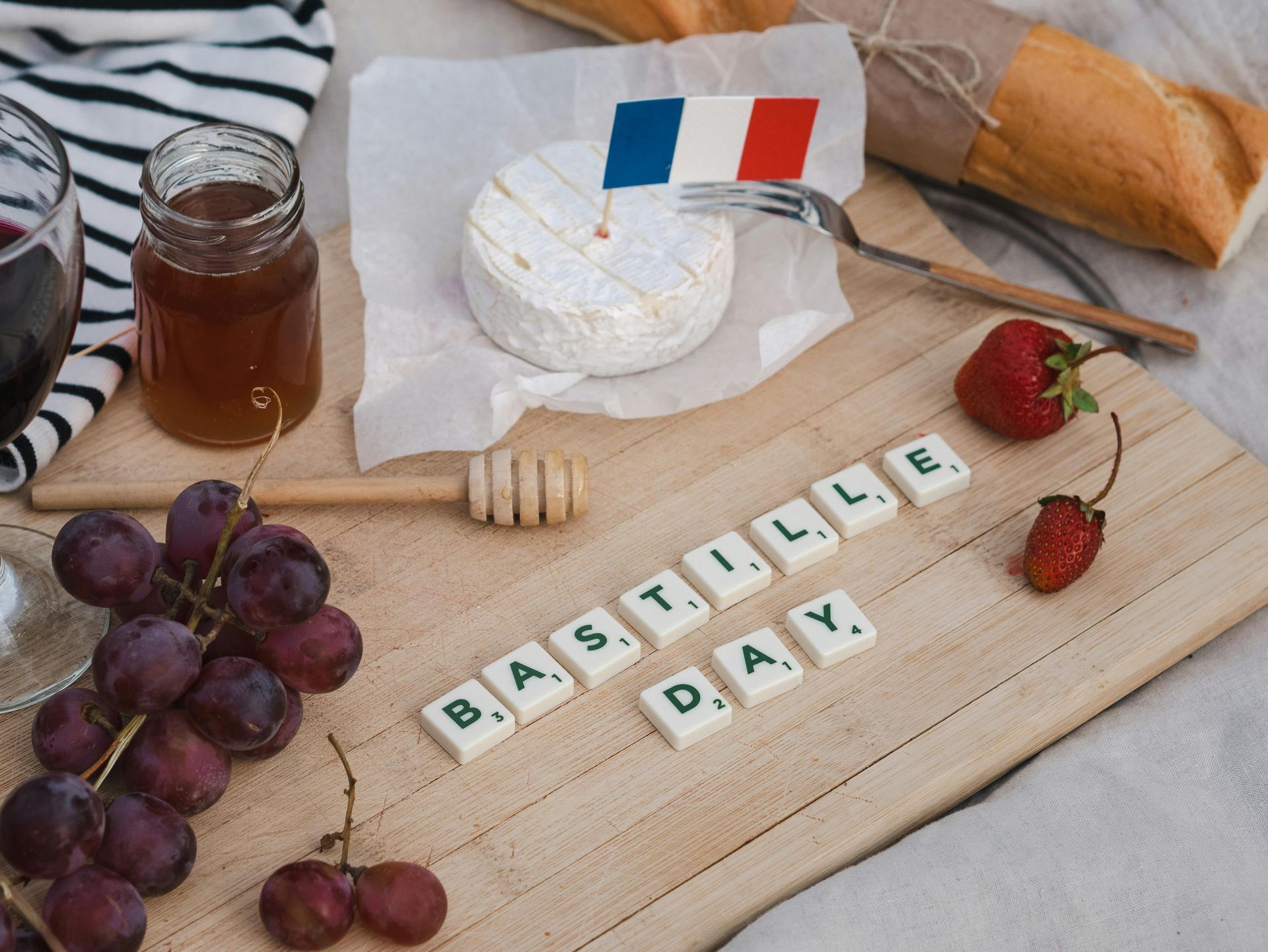
December 18, 2024
Six months ago, our Festival Coordinator, Justin arrived in Melbourne and was keen to explore and understand the French food and wine culture in Melbourne. I took it upon myself to take the Tasmanian native to some of my favorite and best French bars and bistros. He did not realize how popular bistro and brasserie style restaurants were and how for many an essential dining experience. After many steak frites, entrecotes and salade nicoise we managed to narrow down our top picks of French bars and bistros in Melbourne. Bistro Guillaume You probably first met or were charmed by Mr. Brahimi, when he was featured as a guest chef on MasterChef and shared his extraordinary French culinary abilities. He is Sydney born and based, though luckily for us he opened Bistro Guillaume at Melbourne’s Crown Casino in 2008. The restaurant is inspired by a classic French bistro with traditional French food and a classic atmosphere. Justin and I kicked off our dinner with a glass of wine, from Bourgogne, of course! Starters of huitres a la mignonette and tartare were highlights, but we had to save room for our mains, steak frites and magret de canard. Delicieux! Bistro Guillaume nails the simplicity that French bistros offer. There is no huge menu with ridiculous portions and lackluster salads. Guillaume gives you the classics, done well, yet with enough variety that if you aren’t a huge meat-eater or prefer something lighter you can enjoy une ratatouille, pommes frites or a French onion soup. The bistro also shines thanks to its gorgeous layout and location. Diners can expect a splendid view of Southbank, natural lighting and invitingly comfortable seating. Philippe Bistro Guillaume is a lovely way to kick off your French dining experience, whereas, Philippe is for those of us who are slightly more adventurous. You can start off simple with your charcuterie board and then dive into your lovely chicken liver and caviar egg! Philippe Mouchelle came to Melbourne to open the Paul Bocuse restaurant – yes, Paul Bocuse – who he was trained by and who is the only chef in France to have held 3 Michelin Stars for more than 40 consecutive years.You’re in good hands when dining at Phillippe. Tucked away in an alleyway on the Paris end of Collins Street, Philippe welcomes you with its bustling atmosphere and refined style. Justin was taken aback by the decor and the “very interesting” things on the menu. He had never tried caviar eggs, nor prawns. Justin’s motto is that he will try something once with a good drink, so he took the lead with the drinks menu. We settled with a carafe of M. Chapoutier red wine. Philippe is not for the faint of heart. If you want traditional, traditional French food without beginner’s options, then Philippe is a beautiful way to indulge in French delicacies. Bistro Voliere Bistro Voliere is a hidden gem. St Kilda Road is bustling with charming bars and restaurants, so you’d think Bistro Voliere would be an obvious choice. It is magical at night and all of its copper and brass makes for a warm, cozy atmosphere. Here you must enjoy a glass of their delightful champagne or vin rouge and enjoy their gorgeous cheese platters. If you’re not a cheese person and prefer the beverage side of things then you can peruse their extensive and varied wine list and just nibble on some fries with broccolini. Bon Ap’ Petit Bistro Bon Ap’ is not only a great beginners resto, it is also reasonably priced. What is fantastic about Bon Ap’ is their Lunch and Dinner menu deal. $40 for two courses and $50 for three! You get the French childhood classics with the lunch menu such as a Croque Monsieur (Ham & delicious cheese toastie) and a range of French sandwiches. If you’re more of a dinner person then you’re in luck because the dinner menu just gets better. Two courses for $50 and three courses for $65. You can partake in a deliberately crafted charcuterie board and their French-style gnocchi or a gorgeous roast. “What about the drinks?” – Justin asks. Well, I let Justin handle the drinks menu and he was thoroughly impressed. From vintage wines to desert wines you can ask the lovely staff for pairings or you can just enjoy a bottle of their gorgeous fortified wines. Whatever your tastes, Melbourne has incredible, dazzling, authentic French food to offer. Try out these fabulous bars, bistros and restaurants, and let us know what you thought! Interested in knowing more about Melbourne’s French culinary culture? Check out our article on some of Victoria’s best French wineries here If you’re newly inspired to tantalise your tastebuds, see how you can visit some of Melbourne’s best hidden gems of French cuisine this Bastille Day here
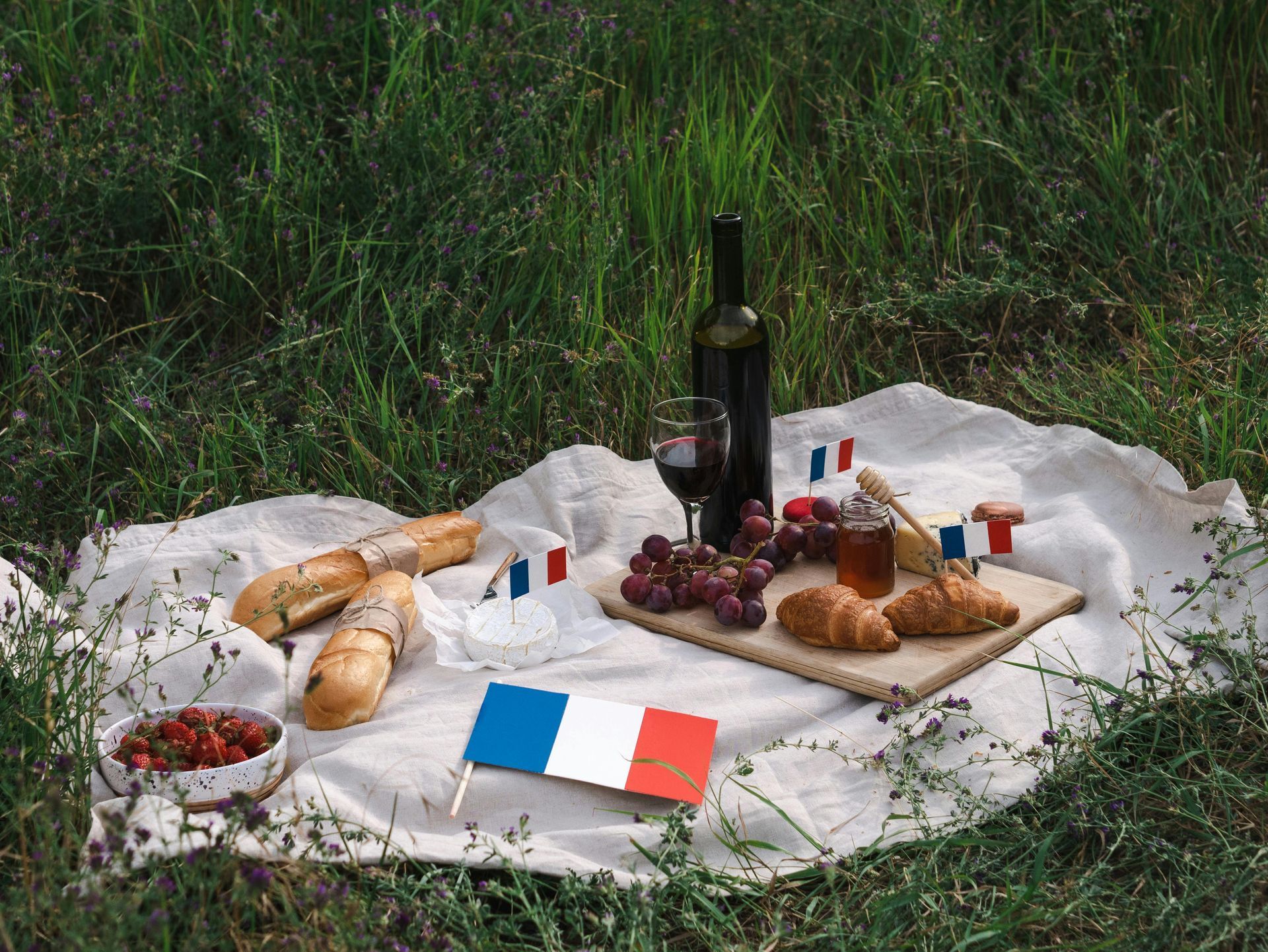
December 18, 2024
Every year in France, the National Day is celebrated on 14 th July. In English speaking countries it is often called “Bastille Day”. However, in France it is referred to as La Fête Nationale or Le Quatorze Juillet. What is the significance of the fourteenth of July? What actually happened at the Bastille? The Bastille had stood in Paris since medieval times, first used a a fort and then a prison. By 1789 it had come to symbolise royal power and was attacked by thousands of angry Parisians on 14 th July 1789. In the summer of 1789, unrest had been growing in Paris. Earlier that year, the Estates General had met at Versailles. Delegates representing the ordinary people – the Third Estate – were at last able to air their grievances and express their dissatisfaction with France’s absolutist monarchy. They were no longer content with power being held exclusively by the nobility and the clergy and demanded an equal share. To reinforce their claims, they formed themselves into a self-declared National Assembly. Initially, King Louis XVI appeared to accept the challenge to his absolute power, but in fact he resisted plans for a constitutional monarchy, in which more power would be given to the people. Royal troops were stationed around Paris. Against a backdrop of rising food prices and widespread hunger, the citizens responded by electing their own representatives, and setting up their own militias. It was one such group of citizens, in search of arms and ammunition, which descended upon the Bastille Prison on that fateful July day. Although the prison had held political prisoners in the past, only a handful of inmates were imprisoned there on 14 July 1789. One of the Bastille’s more famous inmates, the Marquis de Sade, had been moved to another prison just days earlier. A large crowd, some of them already armed, surrounded the building, and demanded entry and access to weapons. The governor of the prison, Marquis de Launay, negotiated with the mob for several hours before they finally were able to enter. They seized weapons, killed the guards, including de Launay who had his throat cut, and freed the prisoners. When the news of the taking of the Bastille was relayed to King Louis XVI at Versailles, he is famously reported to have said “is it a revolt?” to which his courtier replied “No sire, it is a revolution”. July 1790 On 14 July 1790, the first anniversary of the fall of the Bastille was celebrated in a spirit of optimism and unity. Little did the French realise that years of revolutionary terror and turmoil lay ahead. In 1790, La Fête de la Federation celebrated what was expected to be the new political structure in France – a constitutional monarchy. Fourteen thousand “fédérés” or representatives from the provinces, as well as soldiers, came to Paris, and even Louis XVI and Marie Antoinette took part in the celebrations. Nineteenth century During the nineteenth century, society and government swung back and forth between monarchists and republicans, and there was no fixed national holiday. The date varied according to which regime was in power. In 1804 Emperor Napoleon Bonaparte declared his birthday, 15 th August, as the French National Day (it was also conveniently a religious feast day). During the Restoration period of 1814 – 1830, a constitutional monarchy was in place, and the name day of each of the kings was decreed as the national day. In the decade following the tumultuous events of 1870 and 1871, the Third Republic was created, and the newly elected government hoped to heal a divided French society. Inspired by the spirit of national unity of the earlier Fête de la Fédération, the government revived the date, and the fourteenth of July was finally adopted as the French National Day in 1880. How is it celebrated in small towns, and across France and the world? La fête nationale conveniently falls at the time when a majority of French people are enjoying their summer holidays. In France, and in French territories around the globe, the day is marked by fireworks, street parties, parades, and concerts. Another popular modern tradition is the bal des pompiers. Each year, the local fire stations open their doors and transform their casernes into a venue for community parties. For the last two years, fireworks displays and other public events were cancelled. This year, in small towns and big cities, French people are excited to be able to finally celebrate their national day in style. For both French expats living in Australia, as well as Australian francophiles, the Melbourne Bastille Day French Festival gives us the opportunity to celebrate everything we love about France: its food, language, culture, music and more. Bonne fête ! Interested in celebrating Bastille Day with us this year? Check out what’s happening in Melbourne here .

December 18, 2024
Get set for a season of enchanting cinematic escapes as the 34 th edition of the Alliance Française French Film Festival returns to Melbourne from the 8 th of March to the 5 th of April 2023 . The world’s largest showcase of French cinema outside of France promises to deliver an amazing experience for all of us and delight cinephiles and Francophiles alike. The Film Festival’s Artistic Director, Karine Mauris, teases her ‘coups de cœur’* highlights ahead of the festival. Speaking on the line-up, Mauris says: “Our 2023 edition is bursting with effervescence as it tells tales of resilience and limitless hope”. “We can’t wait for festivalgoers to experience our most eclectic line-up to-date of the best contemporary French cinema. The 2023 program will offer something for everyone, whether it be the hilarity of a meta-zombie comedy, tragic journeys with gripping consequences or adventures of l’Amour in all its forms”. This year, the leading ladies of French entertainment take centre stage, with mesmerising performances from Juliette Binoche , Marion Cotillard , Virginie Efira and Léa Seydoux , not to mention Call My Agent! favourite Laure Calamy . Alongside this year’s biggest French box office successes, November and The Innocent , the Alliance Française French Film Festival 2023 also offers the opportunity to discover a new school of emerging French talent: newcomer Paul Kircher’s performance in Winter Boy , Céline Devaux’s directorial debut in the wickedly funny Everybody Loves Jeanne and the 2023 Academy Awards contender for Best International Feature (France) Saint Omer by Alice Diop, featuring rising star Kayije Kagame . Below, we have selected our personal favourites in each category: L’AMOUR IN ALL FORMS: OTHER PEOPLE’S CHILDREN (Les enfants des autres) ONE FINE MORNING (Un beau matin) MASQUERADE (Mascarade) LIE WITH ME (Arrête avec tes mensonges) LIMITLESS HOPE: NOVEMBER (Novembre) SAINT OMER (Saint-Omer) ON THE WANDERING PATHS (Sur les chemins noirs) TENOR (Tènor) FINDING COMIC RELIEF: TWO TICKETS TO GREECE (Les Cyclades) THE INNOCENT (L’Innocent) WOMEN WITH A VOICE ANNIE’S FIRE (Annie Colère) PARIS MEMORIES (Revoir Paris) FINDING YOUR WAY FREESTYLE (En roue libre) WINTER BOY (Le Lycéen) FAMILY RIDE ABOVE (Tempete) Tickets are now on sale via the Alliance Française French Film Festival website here: https://www.affrenchfilmfestival.org/schedule/melbourne *coup de cœur – a sudden falling in love Lucie Charles Interested in French Cinema? Find out about the differences between French and Australian cinema in our recent article here: https://www.bastilledaymelbourne.com/french-vs-australian-cinema-whats-the-difference/
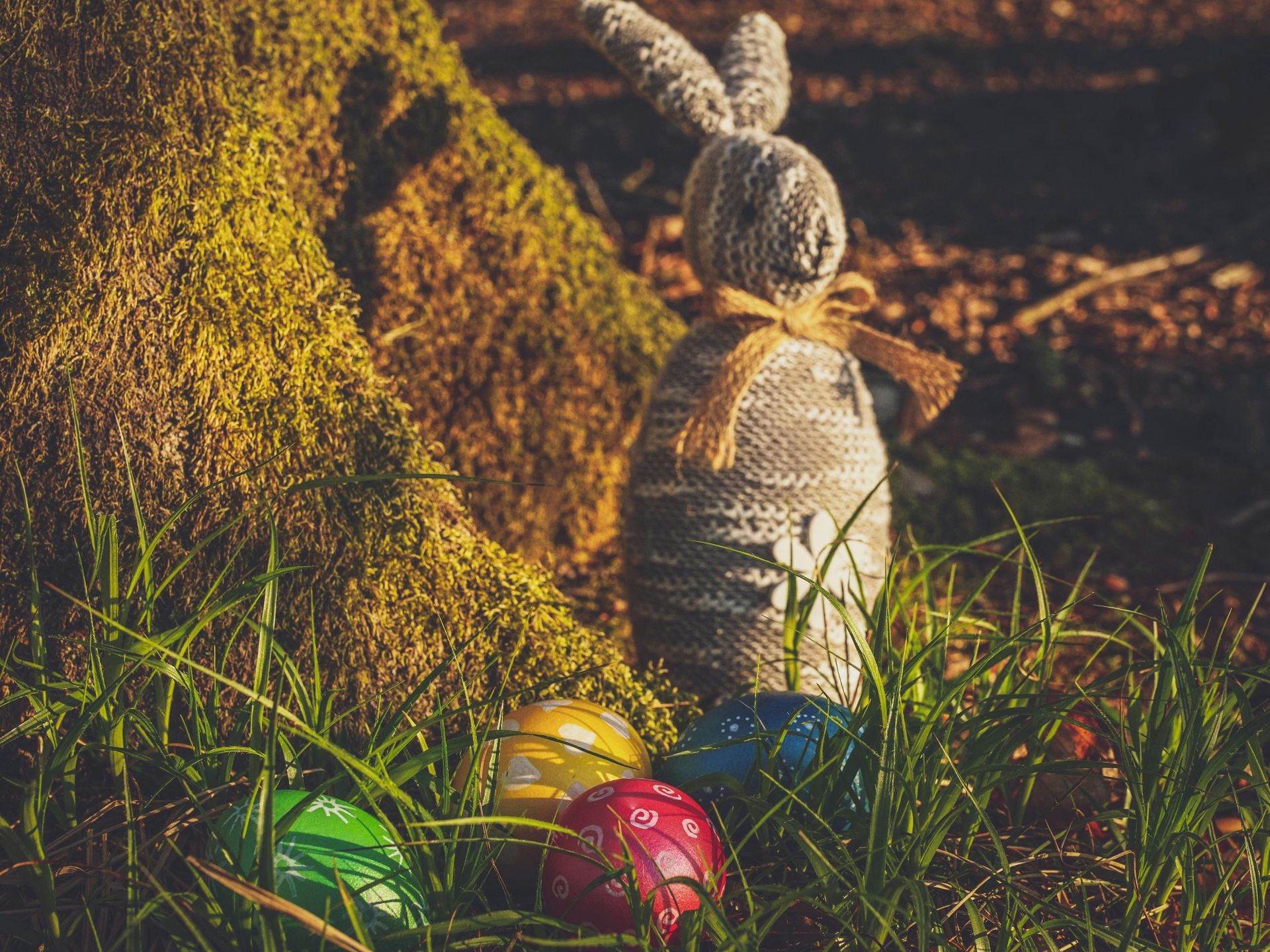
December 18, 2024
Easter is an important holiday for French families and France enjoys a three-day weekend, as Easter Monday is a public holiday in France like in Australia. Origins Easter is a festival with its origins in the Christian faith, where it marks the moment of Jesus’ resurrection, while in the Jewish religion, Easter is the moment when God freed the Hebrew slaves from Egypt, as he had promised to Moses. Today, Easter is a family celebration that has more to do with tradition and community than with religion. Children around the world wake up on Easter morning hoping that chocolate eggs have been left for them. But not every country lies awake at night hoping for a glimpse of the Easter Bunny… The legend of the Easter Bells In most regions of France, ‘’The legend of the Easter Bells’ persists. Most churches have a bell which is joyfully rung to celebrate important occasions throughout the year such as weddings, births, and significant festivals. But from Holy Thursday, and throughout the of Holy Week, the bells stop ringing, and only chime again on Easter Sunday. But where did the bells disappear to? The story goes that on Holy Thursday, the bells depart for Rome to be blessed in the Holy City, and are supposed to come back on Easter Day, sowing a multitude of chocolates on their way. Therefore, Sunday morning is the opening of the “egg hunt”. Usually one member of every family shouts, “the bells have passed” and all the children run to collect the chocolate eggs. Easter Eggs The egg is a symbol of fertility and rebirth: it is the perfect representation of Spring. In France, this tradition is linked to Easter celebrations which began in the 13th century. Before that, real eggs were collected, boiled and their shells decorated by children. From the 18th century onwards, in the upper echelons of society, some eggs were emptied and filled with liquid chocolate. It was only in the middle of the 19th century that the technique for solidifying the chocolate was developed. Traditional Easter Meals Like many of you, French families come together to share in good food – and lots of it – on Easter, where in most regions of France a leg of lamb is eaten. According to the Christian religion, Easter symbolises the passage of Jesus from death to life, his sacrifice. Thus, Jesus is associated with the sacrificial lamb of the Jewish tradition. The lamb also symbolises new life, as it happens in spring. In other parts of France, such as Martinique and Guadeloupe, Easter crab is a tradition. The crab “Matoutou” is a rice-based dish that is prepared well in advance and eaten on Easter Monday. The crabs are given special care before being cooked according to recipes handed down by the elders. The consumption of crab for Easter is a tradition inherited from slavery. At that time, the Church imposed Lent on slaves, since meat was forbidden to them. Crabs were therefore reserved for slaves. Generally, locals prepare it at dawn and then go to the beaches to meet up with their families. Joyeuses Pâques from the Bastille Day French Festival family ! Maeva Bellemare

By Laura Morellon
•
December 18, 2024
At the Bastille Day French Festival, we love cinema! We all enjoyed watching as many films as we could during the Alliance Française French Film Festival during March and April. Next, along with francophiles and cinema lovers around the world, we will turn our attention to the Cannes Film Festival, the most famous and prestigious film festival in the world. This year, the 76 th Cannes film festival will be held from 16 – 27 May. Which film will be awarded the coveted Palme d’Or? The first Cannes Film Festival was held in 1946, although the idea had first been suggested in the late 1930’s. Cannes was chosen to provide an alternative to the Venice film festival (because at that time Italy was under the control of the fascists). However, the planned event, scheduled for September 1939, had to be cancelled due to the outbreak of the Second World War. Since 1946, the Cannes Film Festival has been held every year except for 2020, when it was cancelled due to Covid. The action takes place against the glamorous backdrop of the Riviera. Films are screened in the Palais des festivals et des Congrès, located on the iconic palm-lined La Croisette. The Palais is the location for the famed red carpet walks, as the stars arrive to be photographed, watched by crowds of admiring fans. Films are presented either in competition or out of competition, and each year a jury is appointed to decide the winning films. From those chosen to compete in the Official Selection, the best film is awarded the prestigious Palme d’or. Some films are selected as part of the Un certain regard category, which recognises up and coming, young, innovative film makers. There are numerous award categories, including for short films and documentaries. In addition to the expected awards for best actor and best actress, best director and so on, did you know there is also the Palme Dog, for the best canine performance in a film! The Directors’ Fortnight – la Quinzaine des cinéastes – is one of the parallel sections, in which independent or avant-garde films are featured. (This year Quentin Tarantino will unveil his new film “The Movie Critic”.) The 2023 opening night film is Jeanne du Barry which will open in cinemas around France on the same night. It tells the story of the favourite mistress of Louis XV (played by Johnny Depp). Meanwhile, the marché du film is also underway. A kind of giant trade fair for cinema industry, it is the place for networking, promoting and doing deals. Producers, directors, script writers, composers, and technical geniuses are all there spruiking their latest projects, while others are looking for a new and original idea which will become the next blockbuster. Most of us observe the festival from afar. We read about the significant entries and winners, and are fascinated by the stars, their behaviour, the fashions on the red carpet. But what is it like to actually be there? The Bastille Day French Festival asked some of our friends ‘in the know’ for the expert’s and insider’s view of the festival. Andrew McGregor is Senior Lecturer and Convenor of French Studies at the University of Melbourne. Andrew McGregor Photo – Photo by Andrew McGregor He has published extensively on French cinema. Andrew comments: The Cannes Film Festival is without doubt the most famous and prestigious film festival in the world. It has been a key international showcase for Australian cinema for decades, especially since the revival of the local film industry in the early 1970s. Australians Cate Blanchett and George Miller have had the honour of presiding over the festival jury. I had the pleasure of attending the festival one year thanks to the then Director Gilles Jacob. The location is spectacularly French, and so are some of the parallel sections, but the Competition and the Film Market are well and truly international. Cannes prides itself on discovering the ‘next big thing’ in cinema from anywhere in the world. Jane Campion, Baz Luhrmann and Quentin Tarantino all had their big break at Cannes, along with many other directors from far and wide who would remain unknown today if it weren’t for the keen eye of the Competition and the career-affirming cinematic spectacle of la montée des marches… Melbourne-based film producer Sue Maslin AO describes her insider’s view of the Festival: I have attended Cannes Film Festival many times and experienced it in all of its glory, despair and wonder – from the bottom to the top! That is, from the bottom of the pile as one of more than two thousand filmmakers all desperately trying to get their films financed and seen, to the top of the stairs at the Palais des Festivals in front of a crowd of thousands with a world premiere of my film. From pounding the pavement up and down between meetings, to being driven 500 metres down that same the Croisette in a chauffeur driven limousine to arrive on the red carpet. Cannes embodies the pinnacle of dreams – both realised and unrealised. It is also a market for buying and selling films from every country around the world – and that is where my journey began. My first trip to Cannes was utterly overwhelming. I was confronted with the scale of the international film business. More than twenty cinemas presenting a new film every two hours from morning to midnight … for ten days. Each one hoping to attract buyers. Literally thousands of scripts and films all crying out for attention. And there I was, armed with a beautiful script I believed in… hoping to cut through all the noise and find a buyer. Meeting after meeting. Faint interest. No interest. “Send us the script and we’ll get back to you.” Queue up for two hours for tickets and dress up for an evening premiere and then once in the Palais, remember why you are here. French audiences LOVE cinema. And appreciate glamour and cheer stars and celebrate dreams come true. It is unbelievable to be part of a standing ovation that runs for ten minutes or more. Can people actually clap that long? At Cannes, yes, they do. Fast forward three years and my film, Japanese Story (dir. Sue Brooks) starring Toni Collette was one of ten films officially invited to screen in Un Certain Regard and the red carpet experience unfolded. Endlessly flowing French champagne. Parties on super yachts under the sapphire blue night skies. Then the moment of truth – an advance screening to a roomful of world press and film critics – who are famous for walking out of screenings after a few minutes if they hate your film. In the packed preview screening of Japanese Story, a few seats were vacated and then the rest stayed. Silence at the end. No applause. Was the film going to be well received or not? I need not have worried. The audience later that night voted with their astonishment, their delight and their resounding applause. The market also responded and the film sold to more than 30 countries. We had our moment…and then it was all over. It was back to the pavement next year and onto the next film…and the next!! (Sue Maslin has had four feature films presented in the Cannes market – Japanese Story (2003), Irresistible (2006), Hunt Angels (2006) and The Dressmaker (2015). Merci beaucoup to our two guest contributors! You can find out lots more information and to keep up to date with all the news from Cannes on the official website: https://www.festival-cannes.com/ While you are waiting for winners to be announced, why not listen to Barbara Carlotti’s song about the festival, aptly named Cannes. https://www.youtube.com/watch?v=sYVJtA9IqNI Pauline Georgelin
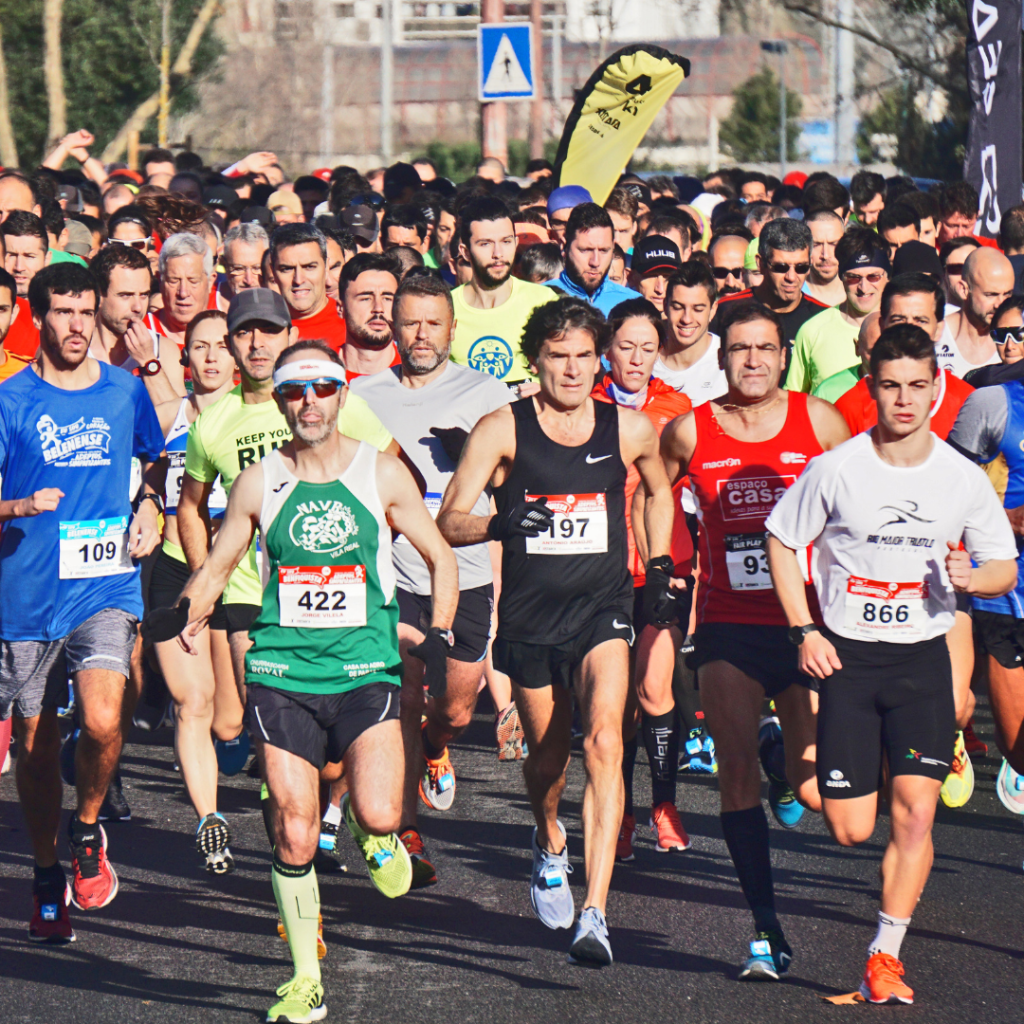
December 18, 2024
Whether it’s the allure of the perfect croissant, memories of our first trip to Paris, or the melodic musicality of the French language, we all love French culture for different reasons. Suffice to say French culture extends far beyond the history, art, and food that it may be most well known for; France has a sporting culture that rivals just about any other country. From triumph at the World Cup to hosting the Olympic Games, there’s always something to support in the world of French sport. Take a look at some of the world-class competitions happening in France this year. The Paris Marathon: The Paris Marathon is a prime sporting event that takes place every year in the city of Paris. This year’s Marathon was on the 2nd of April. Organised by Shneider Electric, the marathon attracts thousands of participants from around the world, and is considered to be one of the most prestigious marathons in the world. It offers runners a unique opportunity to discover the city of Paris while challenging themselves. More than 60,000 runners were at this year’s Marathon; they had the chance to discover Paris through some extraordinary avenues, going through Bois de Vincennes, the Seine, and the Louvre, the Eiffel Tower and the Musée d’Orsay. The finish line was at the iconic Arc de Triomphe. This year, on the podium of the race, Abeje Ayana, having covered 41.2 km in 2h 07m. Mehdi Frere was the best Frenchman to appear on the podium this year. He finished his race in 2h 11m. As for the women’s results, Anais Quemener was the first Frenchwoman; she finished her race in 2h 32m. Next year’s Marathon will take place on April 7th. Considering taking part? Don’t think twice, challenge yourself and get ready for the race! Now onto the South of France with the Grand Prix de Monaco! Grand Prix de Monaco The Grand Prix de Monaco is an emblematic Formula 1 race and one of the three most prestigious in the world. Since 1929, it has taken place on an urban circuit in the Principality of Monaco between the areas of La Condamine and Monte-Carlo. This year’s edition took place on May 28, 2023, with Dutch motorist Max Verstappen taking the prestigious first place. The Monaco circuit is known to be one of the most demanding and challenging on the Formula 1 calendar, with its tight corners, narrow passages and tunnels. Teams and drivers must adapt their race strategy to face the challenges of this unique circuit. Teams work tirelessly on their cars to adapt them to the specificities of the Monaco circuit. However, it is important to stress that the results of the race do not depend solely on the performance of the car, but also on the quality of the team’s strategy and the driver’s performance. In addition, the Monaco Grand Prix is also known for its festive and glamorous atmosphere with an effervescence throughout the weekend around many parties organised in the region, gathering many people and celebrities. The challenges of the 2023 Monaco Grand Prix are therefore important for the teams and drivers, who must compete for the best possible results. However, it is also essential to remember that safety must be the top priority of all actors involved in this event. Now for a trip to the clay courts of Roland Garros. Roland Garros: Roland Garros is one of the biggest sporting events in the world. Known to the tennis world as a ‘grand slam’, it is famous for being the culmination of the clay court season; the infamous red dirt. The surface brings to mind players making big slides, clearly defined ball marks to know whether a shot was in or out, and the giant Rafael Nadal who, having taken the title fourteen times, now has a statue in his honour. This year, Roland (as it is often shortened to by the French) is currently underway, with the competition spanning between May 28 and June 11. The grounds are southwest of Paris, just outside the periphery boulevard which demarcates the city. There you won’t just find tennis, but elaborate grounds, places to have an apéro, and a wealth of history. To note, Roland Garros wasn’t even a tennis player. In fact, the tournament takes its name from a World War One pilot – an innovator, a pioneer, who’s courage and audacity would be at the forefront of his namesake stadium. On the whole, an easy recommendation for fans of the Australian Open. Time to polish pedals and pump tires, the cyclists are back in town! The Tour de France: The world’s largest, most prestigious, and most difficult bicycle race is back in 2023. Over 23 days, spanning 21 stages and some 3,400 km, the pantheon of international racing will come together to test their mettle. 20 teams, each comprising 9 riders, will battle it out when the Tour de France kicks off in Bilbao on the 1 st of July. When it first began in 1903 as a way for cycling newspaper l’Auto to increase its dwindling circulation, the now iconic Tour resembled very little of the modern race with which we are all familiar. Participants pedalled through a total of 2,430 km to claim victory, but each of the race’s gruelling six stages extended an average of 2.5 times longer than any stage we know today; the first stage took riders all the way from Paris to Lyon! The course was also predominantly flat, with only one mountain making an appearance. France’s Maurice Garin, the inaugural winner, received a prize of 6,075 francs (around US$40,000 today). Compare that to the 500,000 euros earmarked for the winner of the final individual general classification, part of a total 2.3-million-euro prize pool this year, and you can see why the world’s cycling elite come from far and wide to “throw their helmet in the ring”. This year’s edition will see contenders visit 12 never before visited towns across two countries, six regions, and 23 departments. Don’t forget to take your pick for who you think will claim the four top honours: Le Maillot Vert (the Green Jersey) – also known as the “Sprinter’s Jersey” is awarded to the rider with the highest number of points at the end of the tour; Le Maillot Blanc (the White Jersey) – for the leading all-rounder below the age of 25; Le Maillot à Pois Rouges (the Polka Dot Jersey) – given to the “King of the Mountains”, the first rider to complete certain mountain climb stages; and Le Maillot Jaune (the Yellow Jersey) – the coveted wearable trophy signifying the rider with the lowest overall time across all stages. Whether you’re a career cyclist or a recreational rider; whether you go bonkers for bikes or prefer to pedal peacefully, the Tour de France is sure to excite, delight, and shine a spotlight on the best of the summer of sport in France this July. Let us know which sporting event you’re most excited about in 2023! Tessa and Lachlan.

November 29, 2023
A hat for the sun, beanie for the cold, a béret for the French? Traditionally, headwear is known to be practical, functional, protective, and sometimes stylish, the béret is all that and more. Made of wool, it keeps your head warm while elevating any outfit, but the béret transcends fashion or practicality, it’s an integral part of French culture and identity. Originating from the Basque region of France and Spain, the béret was adopted by civilians as an efficient shield from the weather. Towards the late 19th century the béret was integrated into the military uniforms, especially for the elite forces such as the Chasseurs Alpins (Alpine Hunters). The béret for soldiers, similarly to the peasants, was chosen for its practicality and ability to withstand diverse weather and terrain. Slowly as its efficiency was fully realised it spread into the remaining ranks of the French military and became a significant token of French troops. Fond of resistance, retribution and resilience, French citizens transformed the military representation of the béret and created a lasting cultural symbol, representing intellect, flair and individuality. The early 20th century saw artists, musicians and authors alike adopt the béret as a way to not only as a socialist comment on military power and control but to differentiate their personal style from those around them, choosing varying colours and patterns of the béret to express themselves. Although in our contemporary society the béret exists less as a message to the people to fight the power, it still retains its symbolism of individuality. Adopted by the fashion world as a key element of design, the béret has become synonymous with chic modernism or classic elegance. In their Fall/Winter collection of 2017 French Luxury label Coco Chanel featured bérets of various materials including classic wool and tweed, and Christian Dior’s Spring/Summer collection of 2017 styled the classic béret with flowing dresses and statement accessories highlighting the versatility of the béret and its ability to remain timeless and ever evolving to the attitudes of society. Today the béret remains relevant, worn by both men and women as a stylish accessory and by certain military units, usually during ceremonial events and national holidays. Its enduring popularity ensures the béret will always remain a symbol of French identity as its fusion of tradition and self expression represent French culture, heritage and pride.

